Long-Tailed Giant Ichneumonid Wasp
Common Eastern Bumblebee
Two Striped Walking Stick
Southern Pearly Eye
Hover Fly
Three spotted Skipper
Giant Leaf-footed Bug
Needham’s Skimmer
Great Southern White
Southern Plains Bumblebee
Great Blue Skimmer
Polyphemus Moth
Common Green Darner
Florida Harvester Ant
Ebony Jewelwing Dameselfly
Ebony Jewelwing Dameselfies, Calopteryx maculata (Beauvois) are most often seen near slow moving streams. Both males and females have iridescent green bodies. The males wings are dark and the females wings are bronze colored with at white spot on the edge of the foreweings. They are large dameselflies that grow to 2.25 – 3 inches and have wingspans of 1.5 – 2.25 inches .
Female Ebony Jewelwings lay their egss on aquatic debris that forms a raft or dam in a stream. The naiads or juvemiles hatcht and feed on small aquatic prey. The naids are preyed on by frogs, fish, and birds. Adult Ebony Jewelwings are prey for frogs, fish, spiders, birds and the larger dragonflies.
Look for this damselfly that is endemic to eastern North America in Florida as far south as Brevard County on the eastcoast and Desoto County on the west coast. Ebony Jewelwings often rest on branches or leaves where their iridescent bodies shimmer in the sunlight.
Photo Credit: Dan Kon
Eastern Black Swallowtails
Black Swallowtail (Eastern)
Eastern Black Swallowtails, Papilio polyxenes, are also known as American swallowtails. They are commonly found throughout Florida in gardens, along the sides of roads, in pastures, and in parks. Three or more generations are produced each year.
A female black swallowtail lays a single yellow egg on a host plant in the carrot family. The caterpillar is green with black stripes and yellow spots. If parsley or dill was chosen as the host plant, the hungry parsley caterpillar will devour the plant in your garden.
Seaside Dragonlet
The Seaside Dragonlet, Erythrodiplax berenice, is the only North American dragonfly that breeds in saltwater.
Native to Florida, these small dragonflies can be found in mangrove swamps, salt marshes, and coastal strands throughout Florida. Adult males are a dusty dark blue, juveniles are yellow and black, and adult females’ color varies. Seaside Dragonlets dine on other insects and can be seen year-round near Florida’s coasts.
White Peacock
White Peacocks, Anartia jatrophae, are common butterflies found on roadsides, near the edges of ponds and wetlands, and in fields and parks with low growing vegetation. They can be seen year-round flying low to the ground where their favorite low-growing nectar plants thrive.
White Peacocks lay a single egg on or near a host plant such as frogfruit or water hyssop. They live for about 4 months and their wingspan reaches 2 – 2.75 inches.
Cloudless Sulpher
Cloudless Sulpher
Cloudless sulfurs, (Phoebis sennae), live in Florida year-round. These beautiful, bright yellow butterflies are hard to miss with their wingspans of 2 – 3 inches. Look for them in sunny, open areas such as along roadsides and in pastures, fields, and meadows.
Cloudless Sulfurs can be seen in large numbers during the fall migration season. Many spend their winters in Florida south of Gainesville. Nectar plants include red morning-glories, scarlet creeper, and cypress vine, scarlet sage, and Salvia. Cloudless Sulfurs prefer various species in the pea family as host plants where females lay a single egg.
Eastern Pondhawk Dragonfly
Common throughout the eastern United States and parts of Canada and Central America, Eastern Pondhawks, E. simplicicollis simplicicollis, are often found near still waters in wetlands and near ponds. Females are bright green with black markings on their abdomen. Males are blue with beautiful green faces.
Eastern Pondhawks will dash from their perch on plants near the ground to snatch prey which includes damselflies and other insects. They will carry their meal off to eat at a suitable place.
With only an average reproductive life of 10 days, reproduction occurs often and sometimes more than once a day. Mating occurs on vegetation and the female deposits her eggs on the water within a minute.
Fun fact: Dragonfly fossils have been dated at over 300 million years old. This means that dragonflies existed more than 100 million years before dinosaurs!
Photo Credit: Dan Kon
Blue-ringed Dancer
Blue-ringed Dancers, Argia sedula, are damselflies. Smaller than Dragonflies, these beautiful dancers are found near freshwater streams, lakes, and rivers. When they are not dancing through the air catching tiny insects in flight, they can often be found perching on aquatic vegetation.
Male Blue-ringed Dancers are vibrant blue and black while females are a dull brown. They fly together as they mate before the female deposits her eggs in vegetation with her long ovipositor. The larvae, known as naiads, dine on insects in the freshwater they inhabit. Blue-ringed Dancers emerge from the larval stage to search for food and a mate while entertaining us with their balletic movements.
Ladybug
Paper Wasp
Wasps get a bad rap. They sting, and they not as glamorous as a bee that makes honey.
Wasps matter a lot because they play an important role in a healthy environment. Paper Wasps (Polistes dominulus), also known as Umbrella Wasps, are predatory and are at the top of the invertebrate food chain. Along with other wasps, Paper Wasps protect lower invertebrate species and plants. They work as generalist pollinators, like bees, to move pollen from one plant to another.
Paper wasps are social and will create a nest each year. The queen will emerge from the ground where she spends the winter and will build a nest using chewed wood pulp. The first generation of wasps she produces consists of worker wasps who feed on nectar. She will then concentrate on laying more eggs. The worker wasps feed the larva masticated caterpillars, flies, and other residential and agricultural pests. Vegetable gardeners love these flying predator Paper Wasps since they provide free and natural pest control. Like a bee or spider, the sting can be life-threatening to those who are allergic. However, Paper Wasps usually do not attack unless they are provoked or feel threatened. Unlike the honey bee, the Paper Wasp’s stingers are smooth and can sting more than once. Running and quick movements can be mistaken as an attack on the wasp. When you encounter a Paper Wasp, raise your hands slowly to protect your face, and walk away slowly.
According to Seirian Sumner, a senior lecturer in Behavioral Biology at the University of Bristol, ‘They may be a nuisance on a sunny day – but a world without wasps would be an ecological and economic disaster.’
Photo Credit: Dan Kon
Dark Flower Scarab Beetle
Dark Flower Scarab Beetles (Euphoria sepulcralis) have white markings on a black or dark brown body that reflects a metallic bronze or green color in the sunlight. They are daytime flyers and can often be found snacking on flowers in yards throughout Florida.
“The adults feed on tree sap, a wide variety of ripening fruits, corn, and the flowers of apple, thistle, mock orange, milkweed, dogwood, sumac, yarrow, daisies, and goldenrod.” Ratcliffe (1991). Occasionally, these common beetles are considered pests because they love to munch on the flowers of fruit trees, roses, and corn.
Dark Flower Scarab Beetles make tasty dinners for a variety of animals. Grubs, which hatch underground from eggs, are eaten by birds, moles, and skunks. Other animals such as frogs, bats, and birds eat adult beetles.
Photo Credit: Aymee Laurain
Garden Flea Hopper
The Garden Flea Hoppers (Microtechnites bractatus) are tiny little insects that lay eggs in plants’ stems. After about 14 days, the eggs hatch, and little green nymphs emerge. As they grow, they turn black, and their wings expand. These small pests tend to damage soft stem plants such as this scarlet salvia (Salvia coccinea). Luckily, parasitoid wasps are effective at keeping these little bugs from causing too much damage. Other insects have been suspected of managing their populations, but there is not much research to determine their effectiveness.
Photo credit: Aymee Laurain
Ornate Bella Moth
Most moths are nocturnal, meaning they are only seen at night but, this beautiful moth, the Ornate Bella Motha (Utetheisa ornatrix), can be seen fluttering in the daytime. A very distinguishing feature of this species of moth is the bright pink color seen when flying. When at rest, this coloring is often covered by the top wings. Their coloration greatly varies, which for a long time confused taxonomists who had multiple names for the species based on their appearance. It turns out they were all a single species.
These beauties can be seen through most of the Eastern United States through the Midwest. The eggs are small yellow spheres. The larvae are an orange color with black patches and white spots with many hair-like structures called setae. The pupae are encased in a brown and black sac covered in a light coat of silk. A common native host plant for these moths is the Crotalaria avonensis, a beautiful plant with yellow flowers. These plants produce pyrrolizidine alkaloids, which are toxic to many species, but not the ornate Bella moth. These moths consume the plants and thus become toxic themselves. This toxicity protects them for the short three weeks of their life.
Red and Black Mason Wasp
While everyone loves honeybees, wasps get a bad reputation. Although both help as pollinators, both are capable of stinging. Wasps, such as this Red and Black Mason Wasp (Pachodynerus erynnis), can usually be harmless.
Mason wasps are solitary, and unless provoked, they couldn’t care less about humans. Females will build nests made out of debris and mud. Each nest contains multiple compartments containing an egg and food source for the larvae to feed on once they hatch. Larval food consists of several garden pests such as cutworms and armyworms. Adults feed on nectar from flowers.
Regal Jumping Spider
Regal Jumping Spiders (Phidippus regius) are cute little fuzzy spiders typically found around immature woodland habitats. They can also be found hanging out on your windshield. Black and white features identify males. Females are grey or brown in color. These spiders may be expert jumpers, but they also produce a dragline in case they miss their target.
Males perform a romantic dance to woo the females. They show off their handsome leg fringe and bright metallic green chelicerae. If the lady is impressed, they will cohabitate in dried leaves such as old palm fronds. When the mating time arrives, the male does another type of romantic dance that is different from his courtship dance. During this dance, he shows off his dance moves and then plays a game of peek-a-boo with the female through the tent-like web. Once the female allows him in, he softly pets her several times before mating occurs. Quite the charmer, isn’t he?
When it comes time to lay eggs, the female will produce several nests under pine and oak trees. Several hundred eggs can be laid during this time. Babies will consume small invertebrates. While they may strike fear into other insects, they are relatively harmless to humans. Rough handling of the spiders may prompt a bite that can sting for several minutes before subsiding.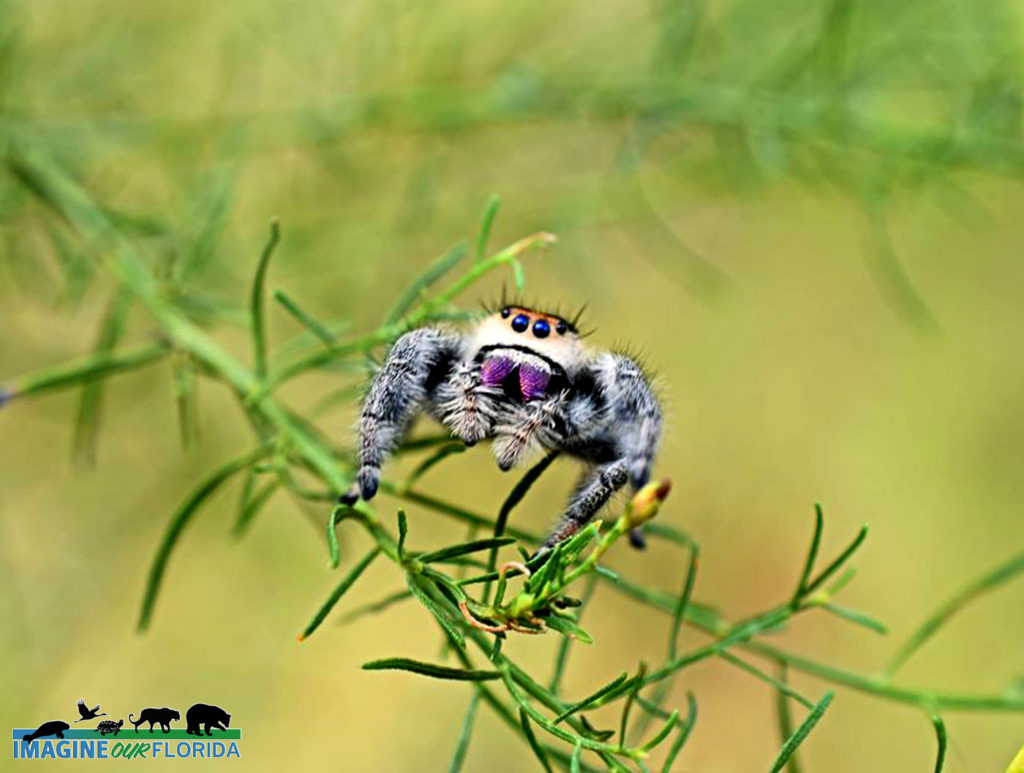
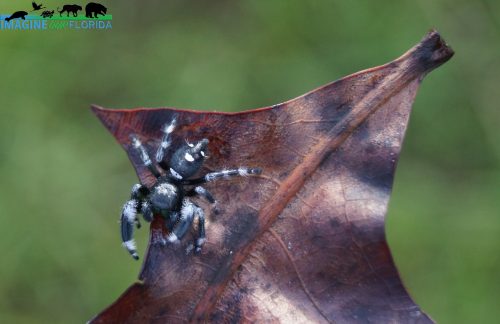
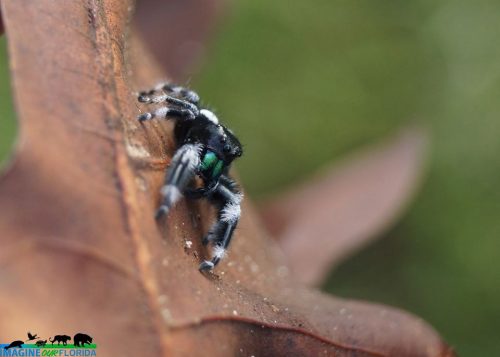
Saddleback Caterpillar
Saddleback Caterpillars (Acharia stimulus) have hairs that cover their bodies, which secrete venom. Contact with the hairs will cause a painful rash, burning, itching, swelling, blistering, and nausea. The cocoon and the larvae have hairs as well. The hairs are hollow quills connected to poison glands beneath its skin. The venom will spread if the hairs are not removed from the skin.
Saddleback Caterpillars are easy to distinguish by their green-colored backs with a white-ringed, brown dot in the center. They are brown at either end, have skin with a granulated appearance, and sport pairs of fleshy horns. The Caterpillar is one inch long with a slug-like body in its larvae stage.
The Saddleback Caterpillar is a general eater and can be found in oak trees, fruit trees, and many other plants. Females lay up to 50 eggs on the top leaves of a host plant. The eggs are tiny and transparent with a scaly look.
The adult Caterpillar is the Saddleback Caterpillar Moth, which is dark brown with black shading. The dense scales on its body and wings make it look furry. The back wings are a lighter brown. The wingspan is between one to two inches wide. Near the front wing is a single white dot and another 3 white dots near the front apex.
The bright colors on this Caterpillar are a warning to predators. Never touch this or other brightly colored, hairy Caterpillars with your bare hands.
You can remove the hairs from the skin by using tape.
Photo Wikimedia Commons
Eastern Grasshopper Lubber
The Eastern Grasshopper Lubber (Romalea guttata) is very distinctive in its coloration. They are yellow with black along the antenna, body, and abdomen. Their forewings, which are rose or pink in color, extend along the abdomen. The hind wings, which are rose in color, are short. They can grow as large as 3 inches and can be seen walking very slowly and clumsily along the ground. Lubbers cannot fly or jump, but they are very good at climbing.
The Grasshopper Lubber can be found in wet, damp environments but will lay its eggs in dry soil. The eggs are laid in the fall and begin hatching in the spring. The female will dig a hole with her abdomen and deposit 30-50 yellowish-brown eggs. They are laid neatly in rows called pods. She will produce 3-5 egg clusters and closes the hole with a frothy secretion. Nymphs wiggle through the froth and begin to eat. The male will guard the female during this time.
Nymphs have a completely different appearance from adults. They are black with yellow, orange, or red strips. They will have 5-6 molts to develop their coloration, wings, and antennae. The coloration of adults will vary throughout their lives as well, and they are often mistaken for different species. There is no diapause in the egg development, and they take just 200 days to develop depending on temperature. A month after the Grasshopper becomes an adult, they begin to lay their eggs.
Both females and males make noise by rubbing their front and hind wings together. When alarmed, they will secrete and spray a foul-smelling froth. This chemical discharge repels predators and is manufactured from their diet. The Grasshopper’s diet is so varied that it is difficult for predators to adapt to the toxin produced. Their bright color pattern is also a warning to predators that they are not good to eat. Birds and lizards avoid them, but parasites will infect nymphs from the tachinid fly. Loggerhead Shrikes will capture the Grasshopper and impale it on thorns or barbed wire. After 2 days, the toxins in the lubber’s body will deteriorate enough for the prey to be consumed.
Lubbers are long-lived, and both the adults and the nymphs can be found year-round in Florida. This Grasshopper occurs in such large numbers in Florida that it can cause damage to your landscape’s plants. Lubbers will bore holes throughout a plant regardless if they are vegetables, citrus, or ornamentals. If their numbers are large enough, they can decimate a plant.
Did you know:
Lubber is an old English word. It means a big, clumsy, stupid person, also known as a lout or lummox. In modern times, it is normally used only by seafarers, “landlubbers.”
Photo credit: Dan Kon
Schaus’ Swallowtail
The Schaus’ Swallowtail (Heraclides aristodemus ponceanus) is a large black and yellow butterfly endemic to Florida. This butterfly is found only in Florida and is restricted to intact tropical hardwood hammocks.
The Schaus’ swallowtail was listed as a federally threatened species on April 28, 1976. It was reclassified as a federal endangered species on August 31, 1984. Population estimates range from 800 to 1200 individuals. It remains the only federally listed butterfly in Florida.
Once ranging from the Miami area south through the Florida Keys, the Shaus’ swallowtail is currently restricted to only a few remnant tropical hardwood hammock sites on the south Florida mainland, northern Key Largo, and several small islands within Biscayne National Park. Adults fly slowly and leisurely and are very adept at flying through the dense hardwood hammock.
Adults have a wingspan range of up to 2.3 inches with females being the largest. Males have yellow-tipped antennae. Their wings’ upper surface is black with a row of yellow or white spots and a broad yellow or white band. The hindwing tails are outlined in yellow. The undersides of the wings are yellow with brown markings and a broad blue and rust-colored band.
The Schaus’ swallowtail produces one generation each year from April to July with the peak time occurring typically from mid-May to mid-June. Adult emergence and reproduction are correlated with the beginning of the Florida rainy season. However, the pupae may remain in diapause for more than one year if optimal weather conditions are not present. Females lay green eggs singly on new growth. The developing larvae then feed on the young growth.
Listed as an endangered species, threats to the remaining population include the loss of genetic diversity due to inbreeding, climate-related impacts such as drought, habitat disturbance from fire, tropical storms or hurricanes, mosquito spraying, and loss of habitat. Hurricane Andrew left behind only 73 butterflies in 1992 after sweeping through the butterflies’ home range. Because their habitat is limited, it is possible that a single hurricane can make the Schaus’ Swallowtail extinct. However, the protected status and their rebounding numbers after Hurricane Andrew bring renewed hope that this gorgeous butterfly will survive and thrive in our beautiful state.
Photo credit:entnemdept.ufl.edu
Hanging Thief Robber Fly
The Hanging Thief Robber Fly (Diogmites) is an ambush predator that catches prey by either catching it from the ground or by catching it while on a plant. Once they obtain their food, they will use two legs to hang from a leaf or stem and use the rest to maneuver the food as they consume their catch.
The Hanging Thief Robber Fly is a large fly that hangs from leaves and branches waiting for its favorite food, bees, dragonflies, and biting flies like horse flies to pass by. It then takes chase and captures its prey in flight. It takes its prey to a branch or leaf where it pierces its victim with its mouthparts and drinks its fluids.
In this photo, you can see the behavior that earned this fly its common name of Hanging Thieves.
The genus Diogmites consists of 26 species in the United States, with 12 of those living east of the Mississippi River.
Black Soldier Fly
Southern Carpenter Bee
What could be nicer than a native pollinator and a native flower? This Southern Carpenter Bee (Xylocopa micans) is stopping by flowering pennyroyal (Piloblephis rigida). The carpenter bee is a solitary bee that lives for one year. They nest in the wood of dead trees. Like other pollinators, carpenter bees are important to the survival of many species of plants. Pennyroyal is a member of the mint family and can be found in sunny areas of sandy soil along forest edges. It can be brewed into a tea as well.

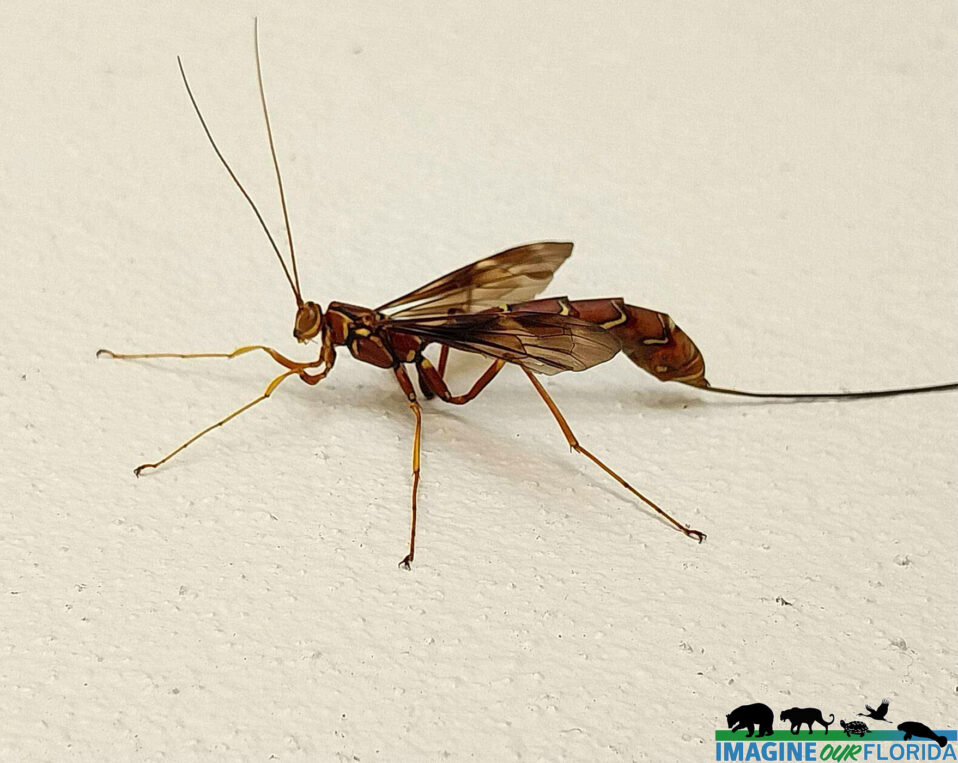
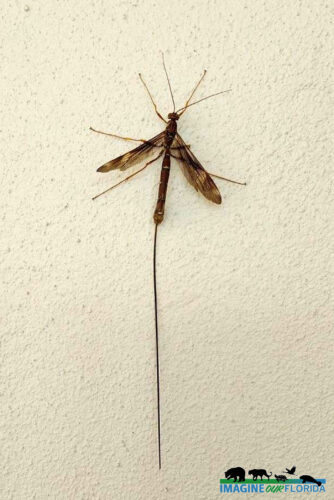
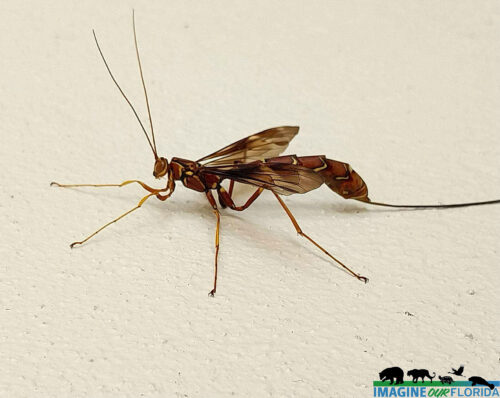
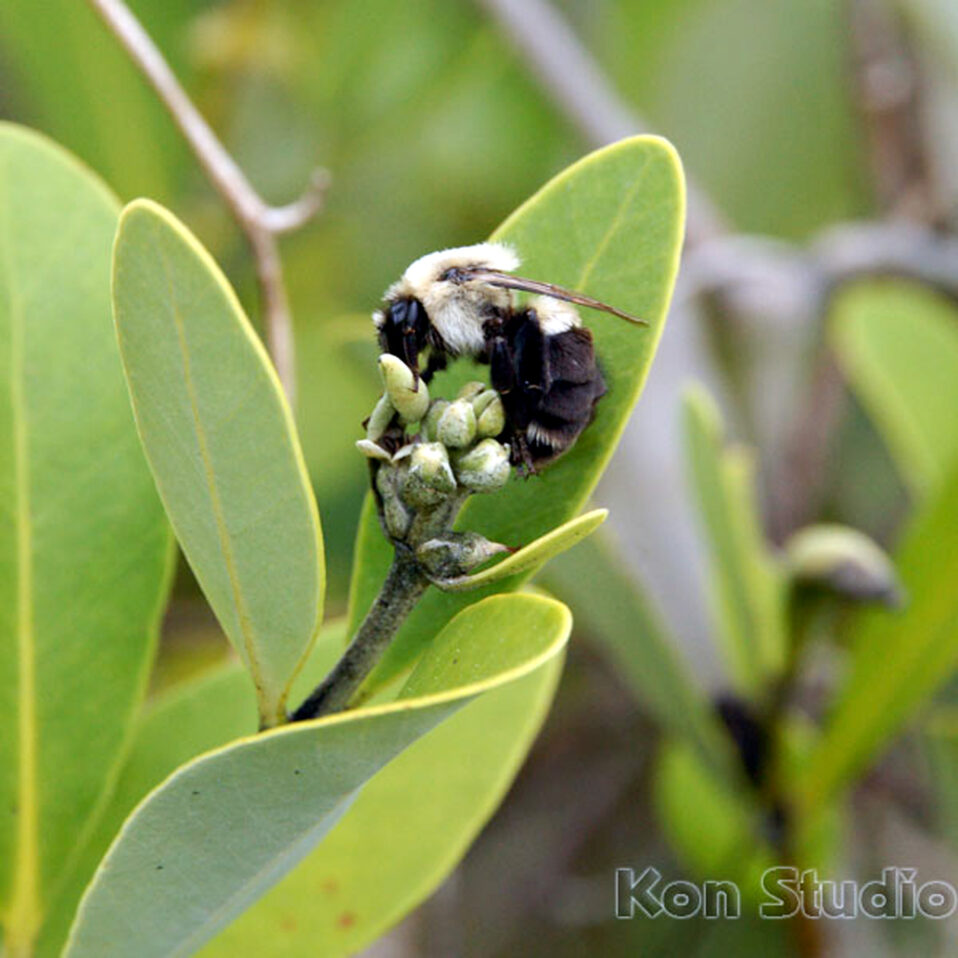
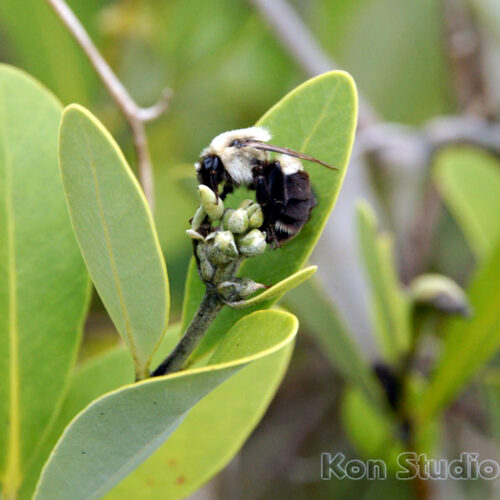
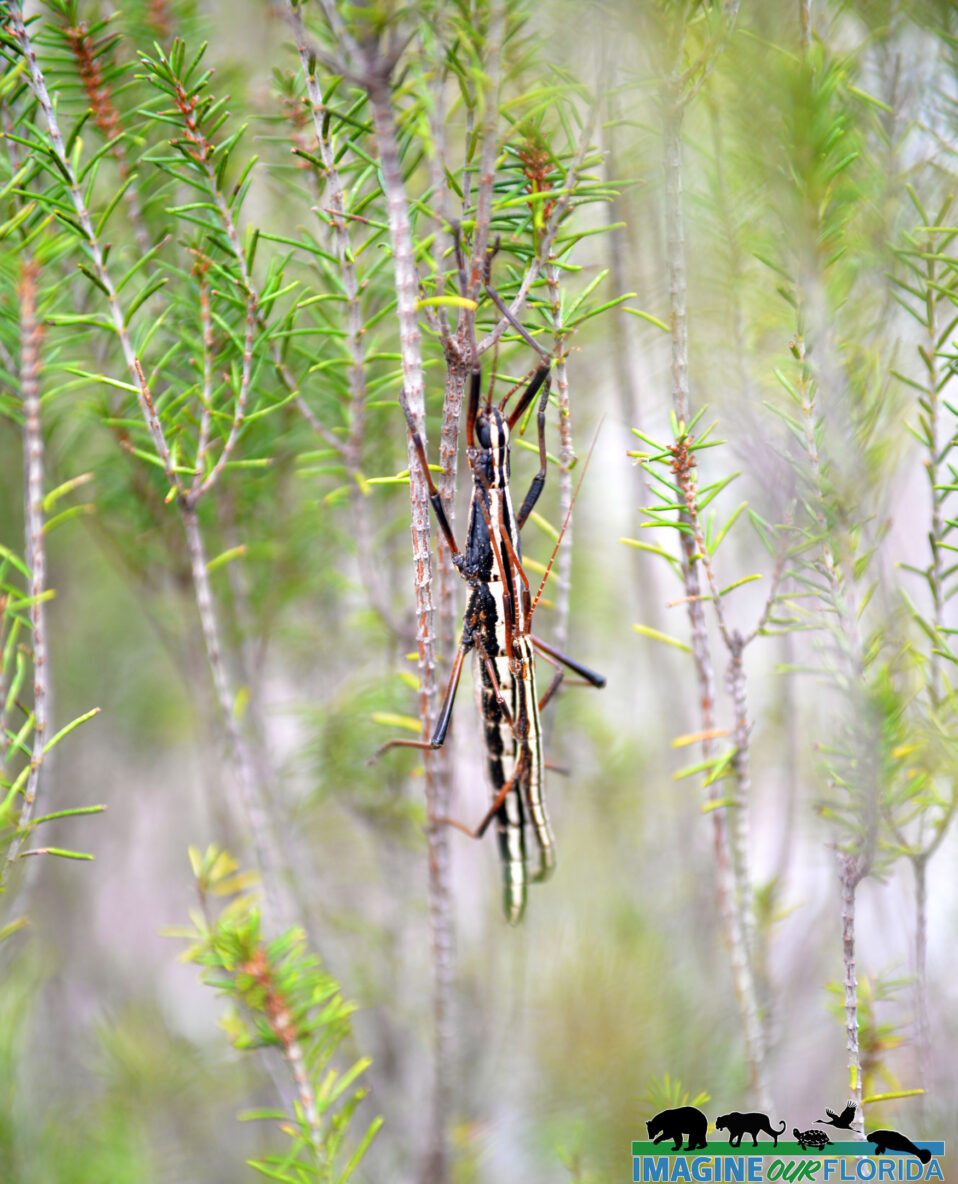
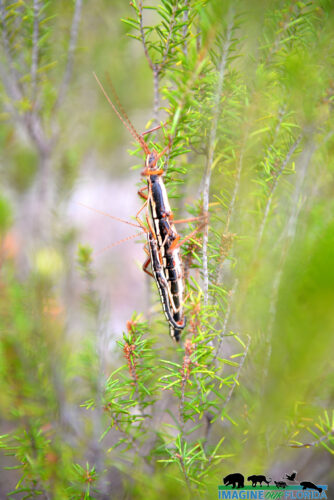
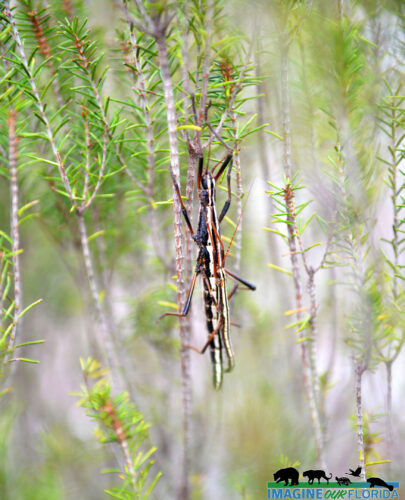
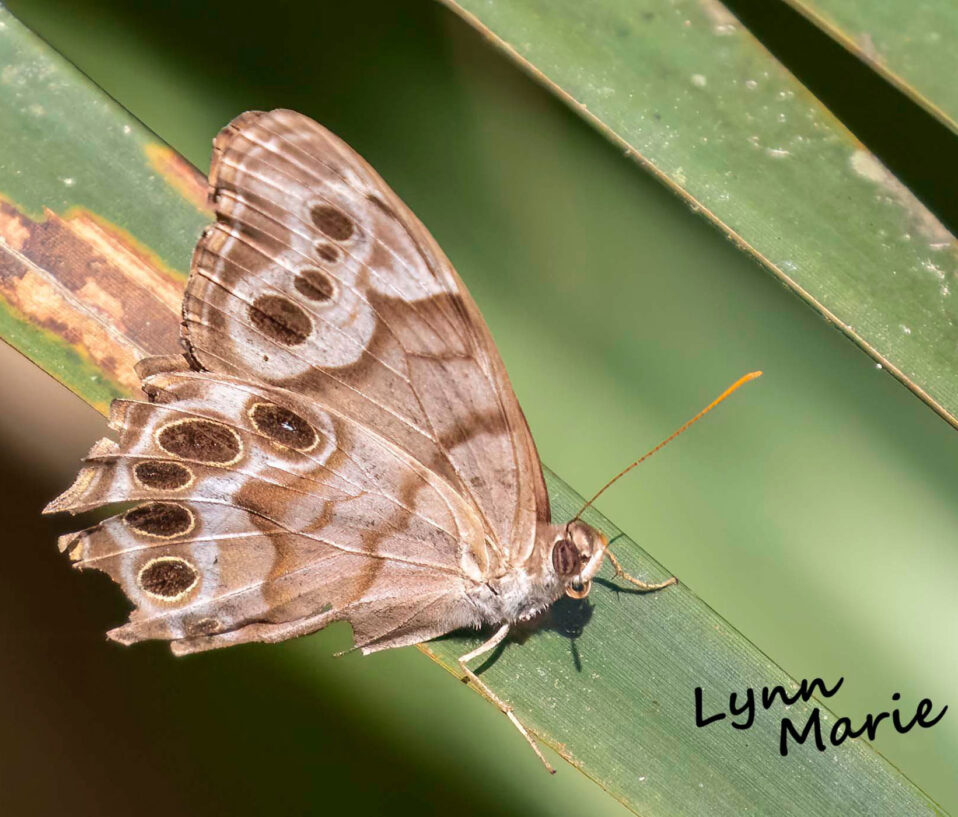
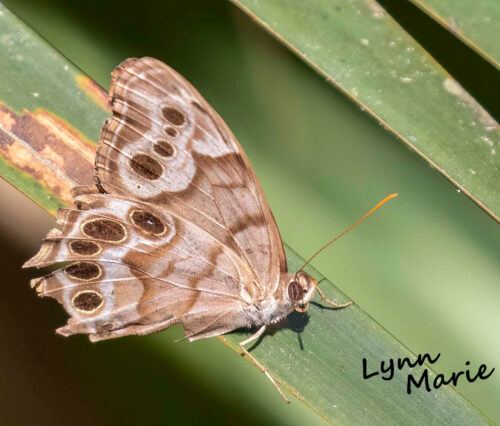
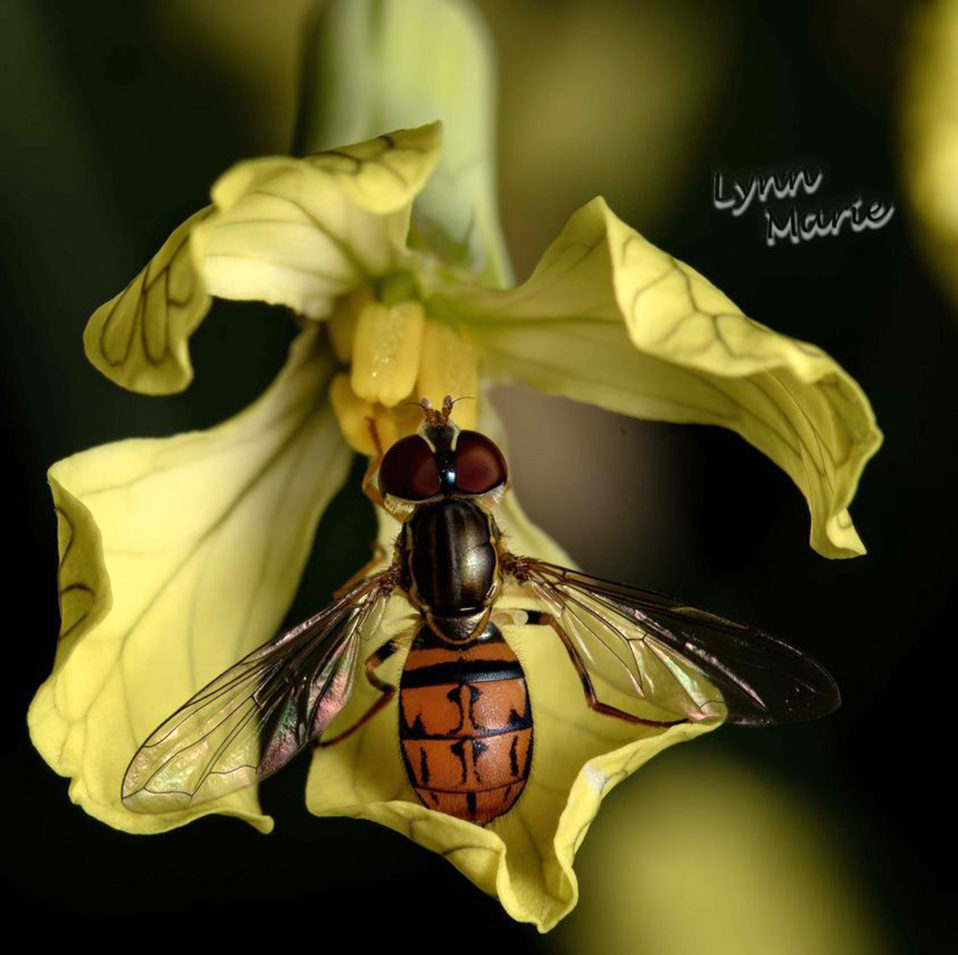
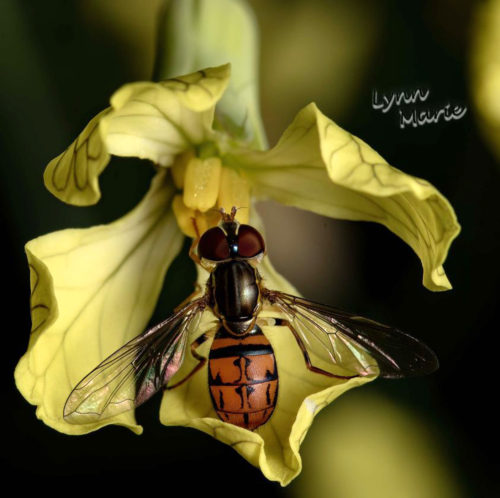
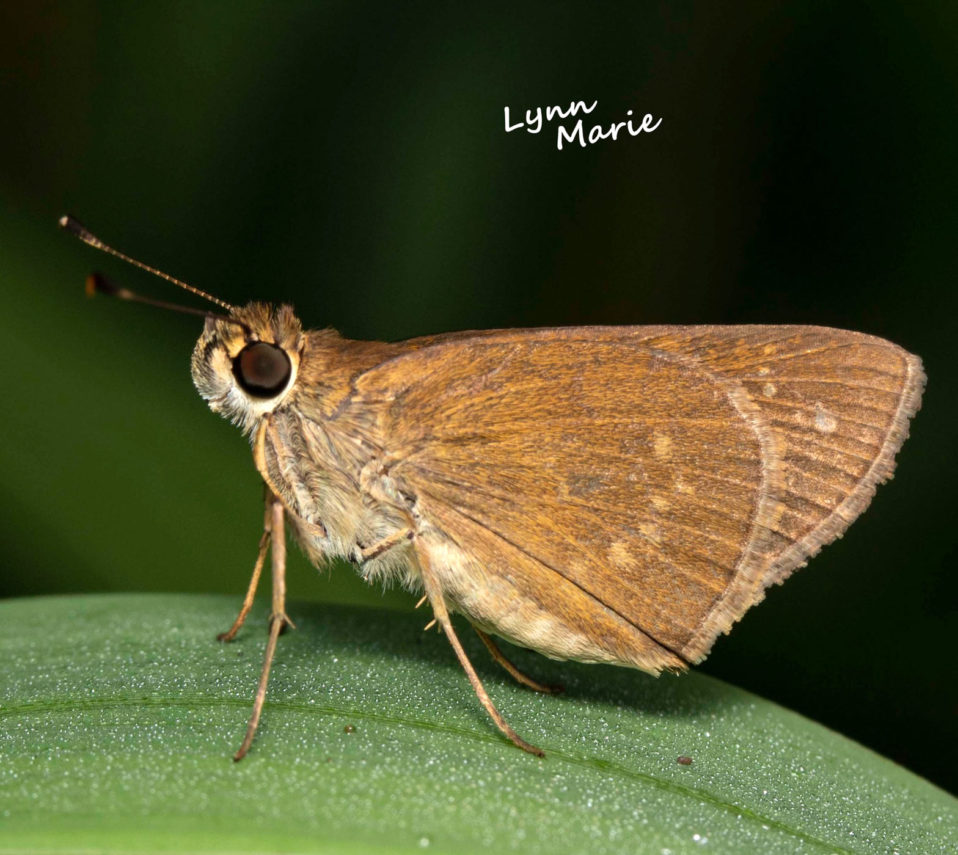
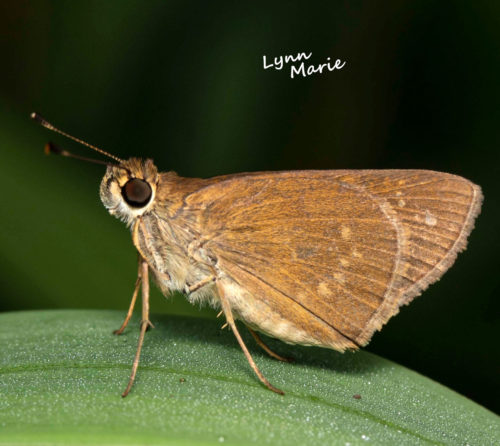
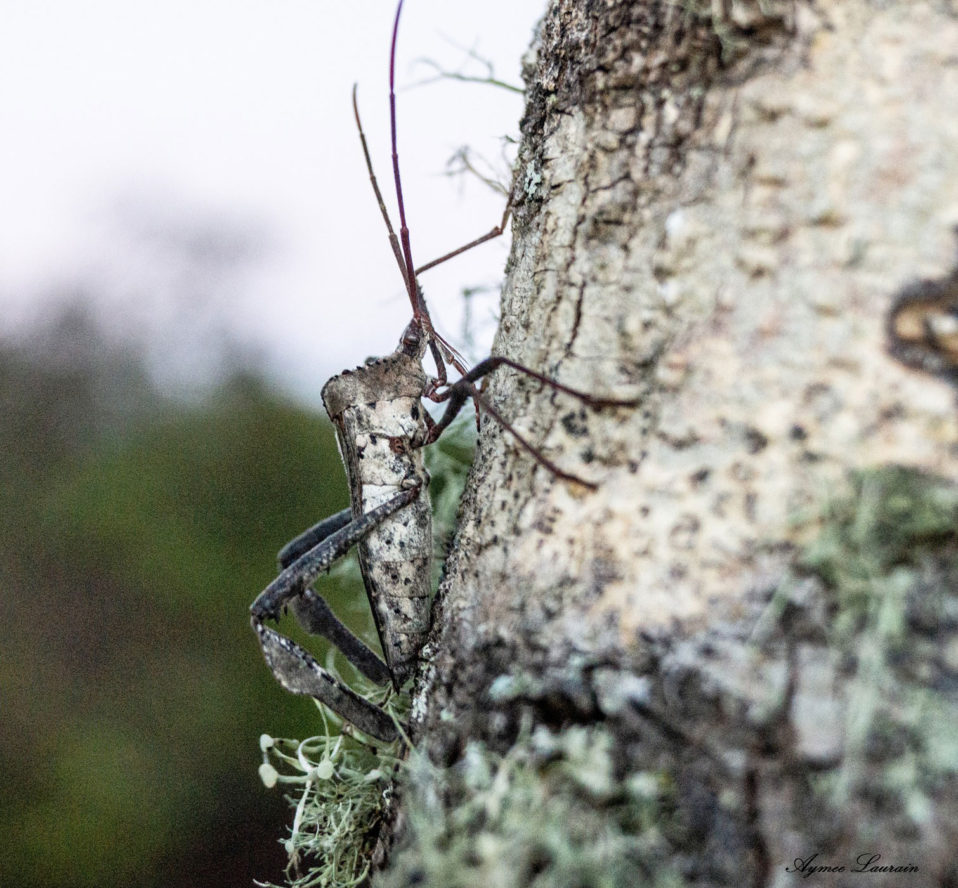
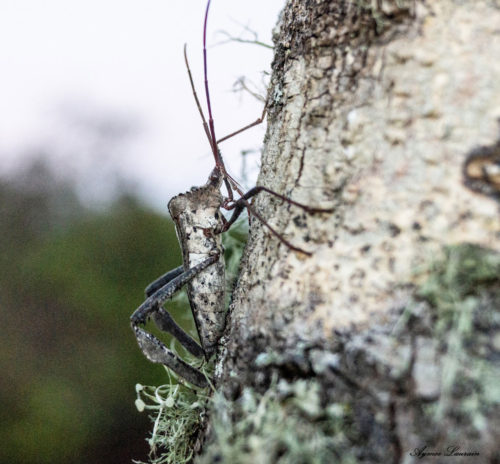
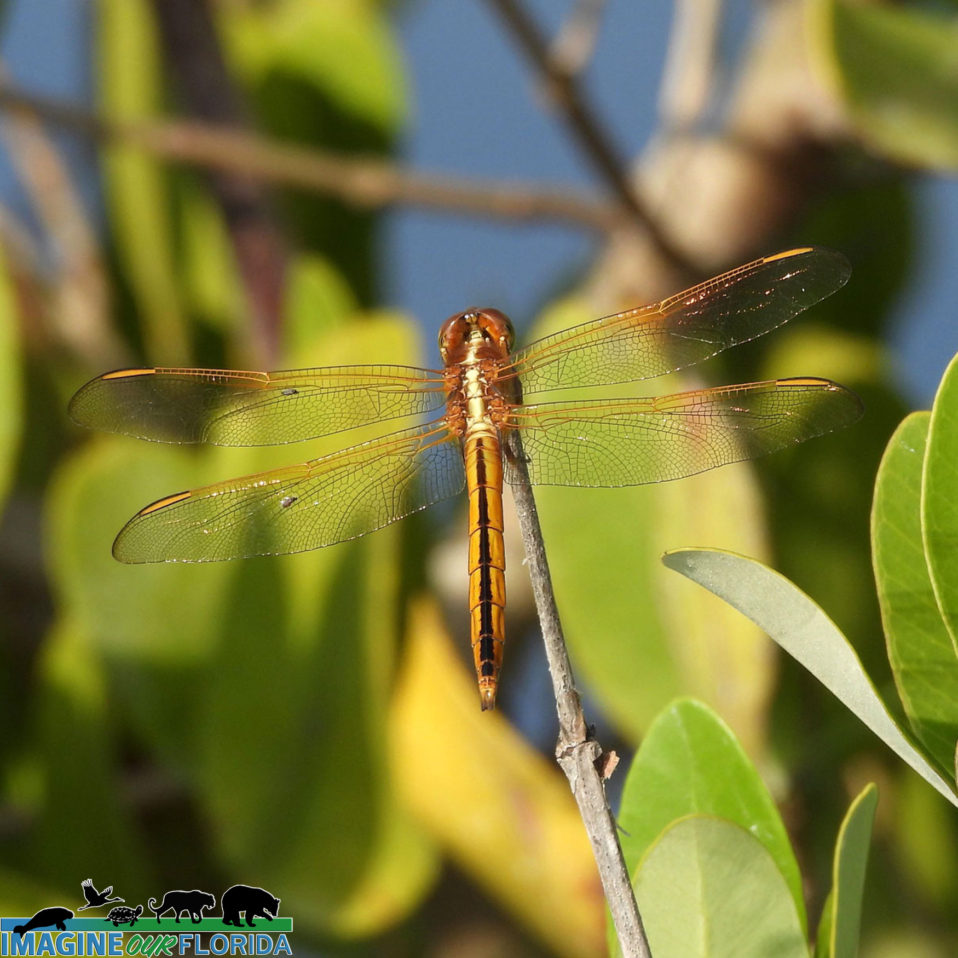
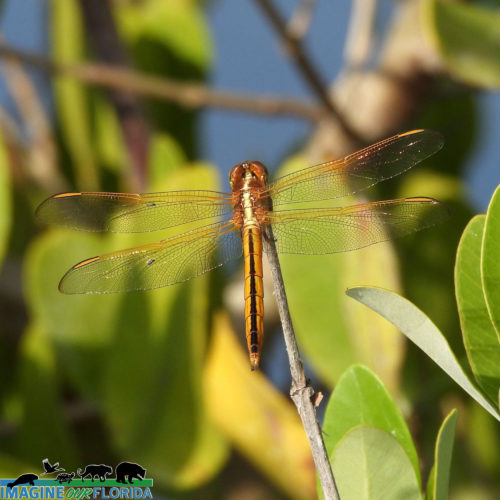
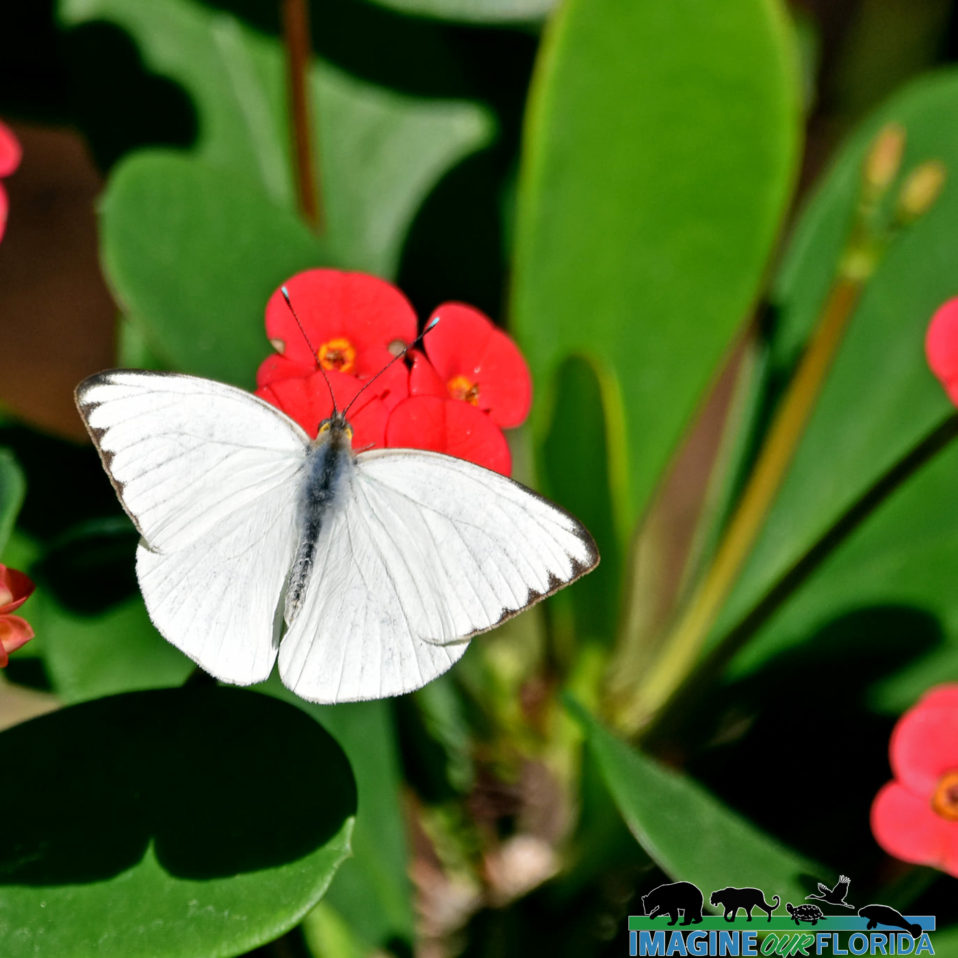
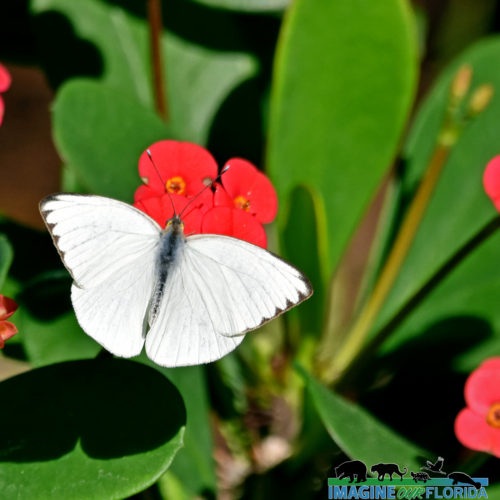
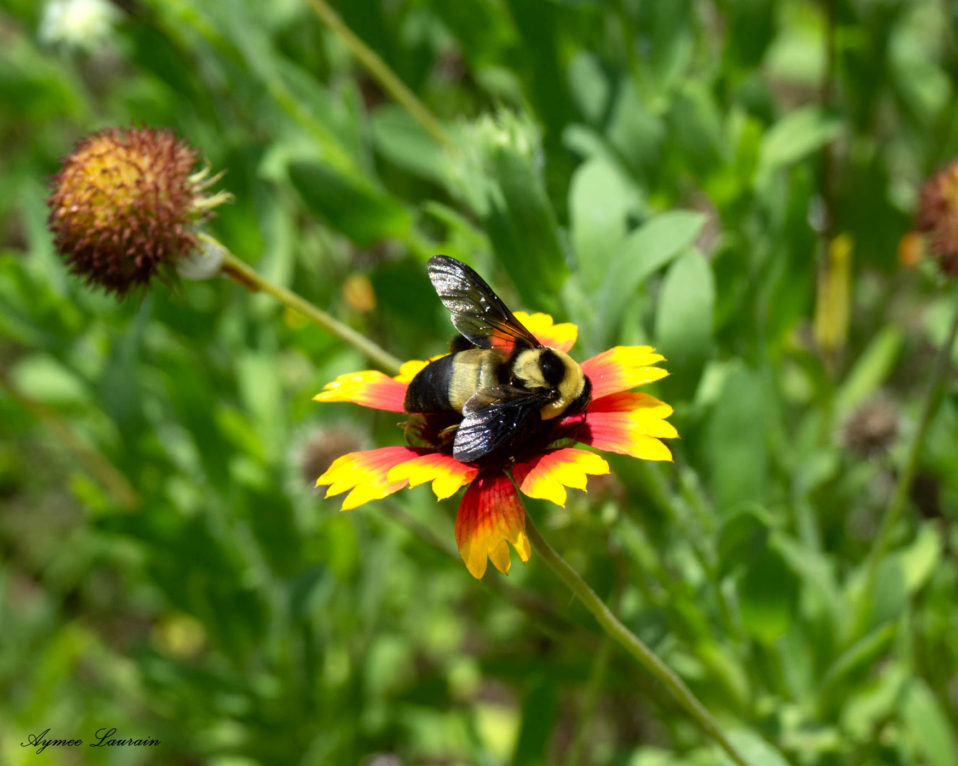
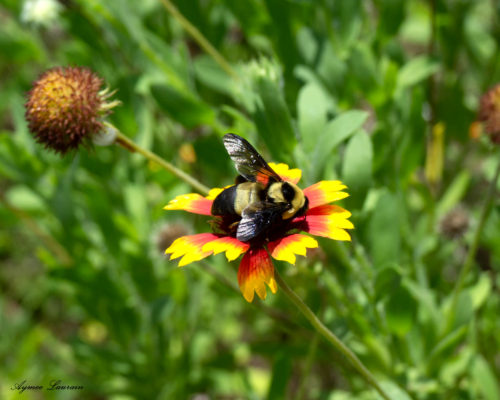
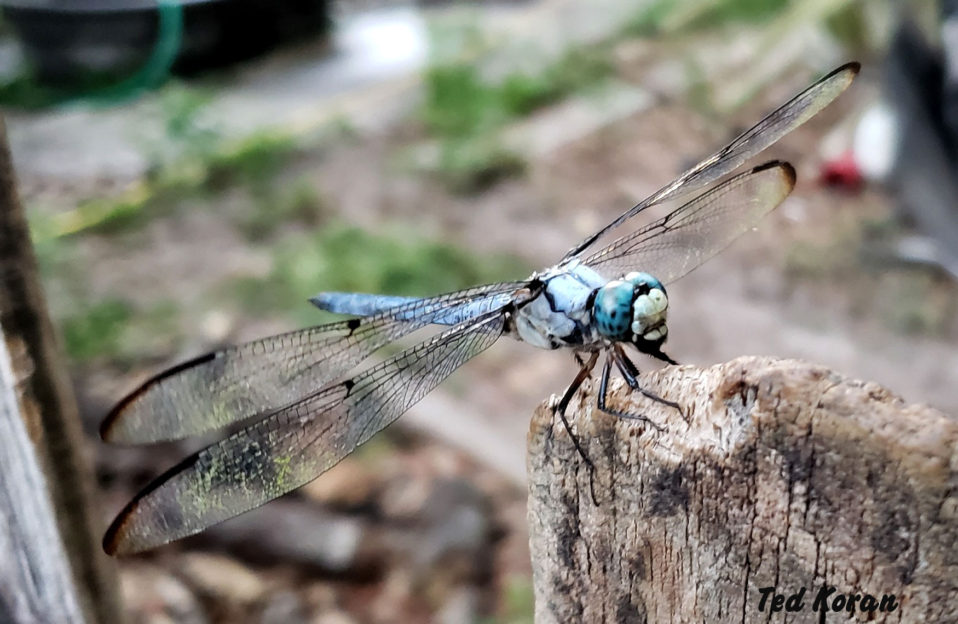
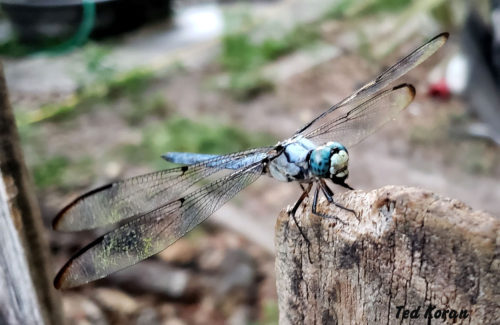
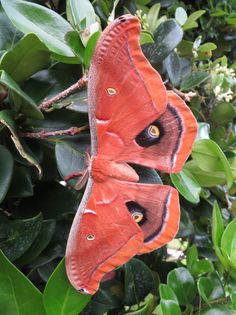
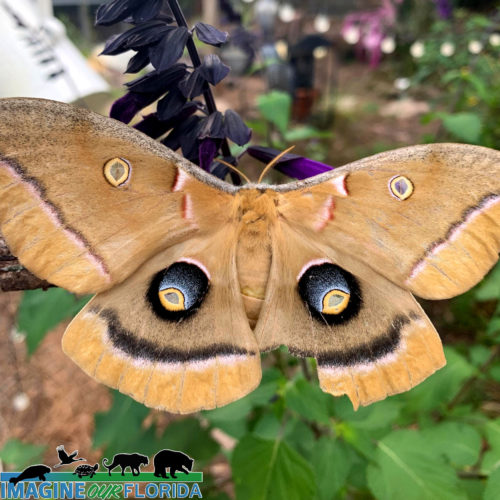
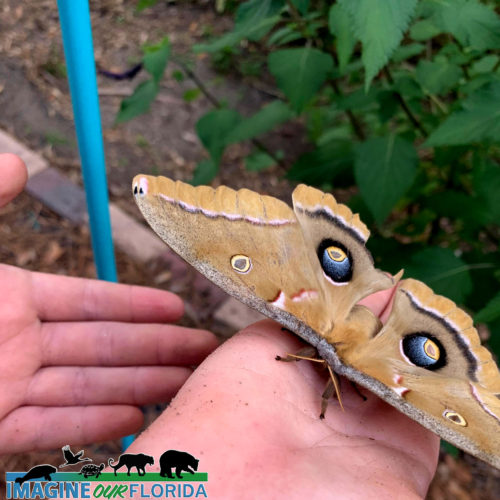
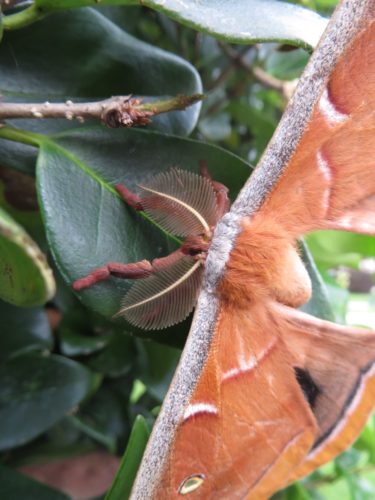
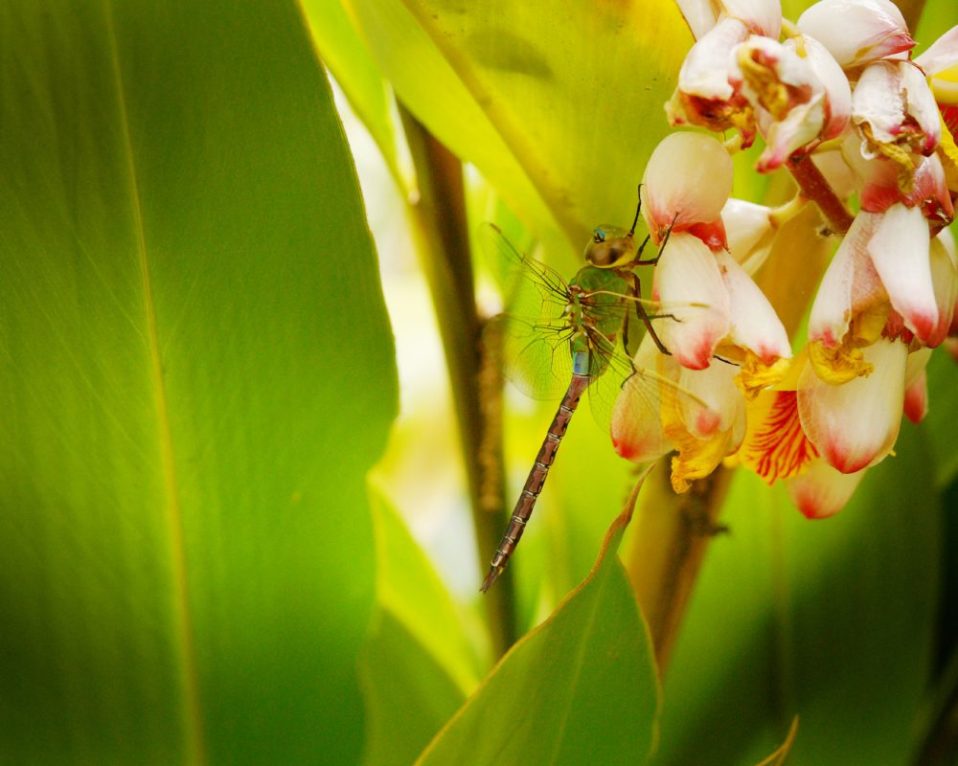
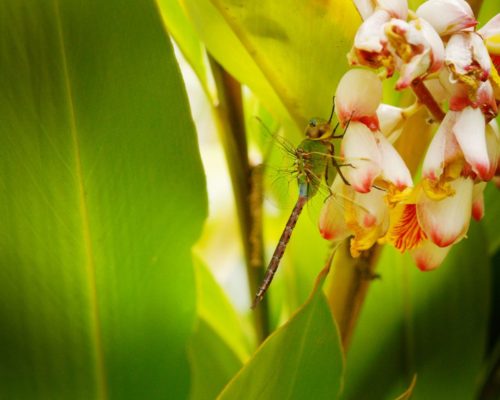
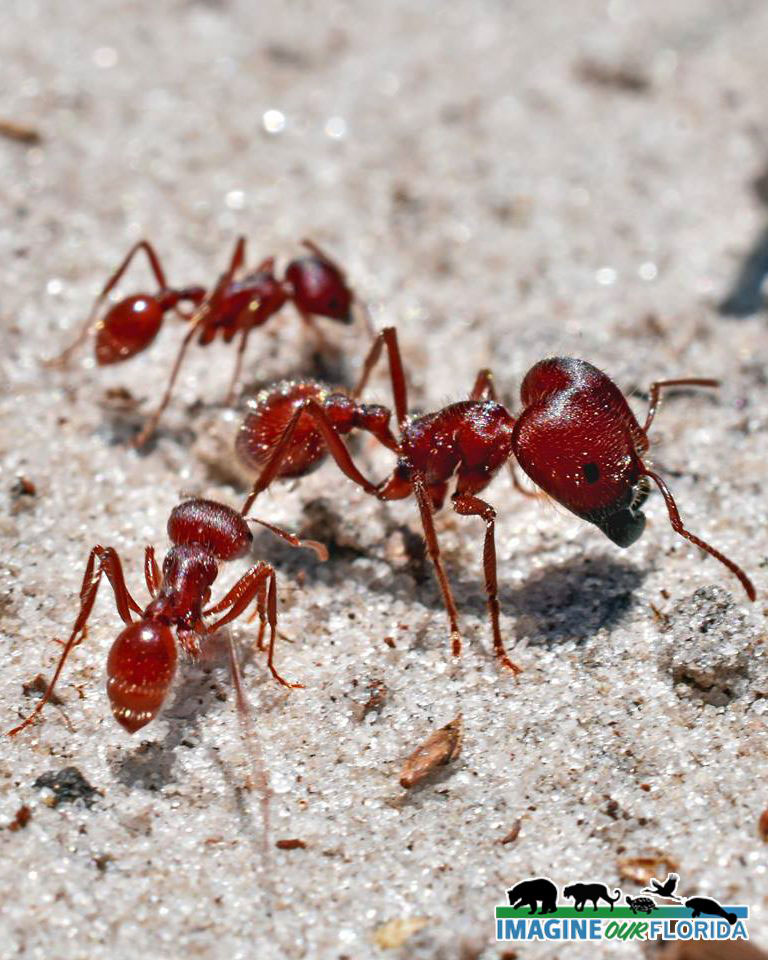
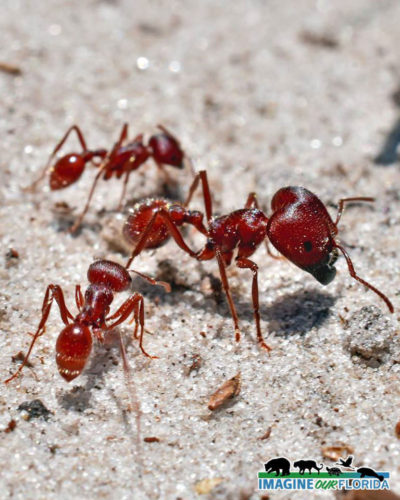
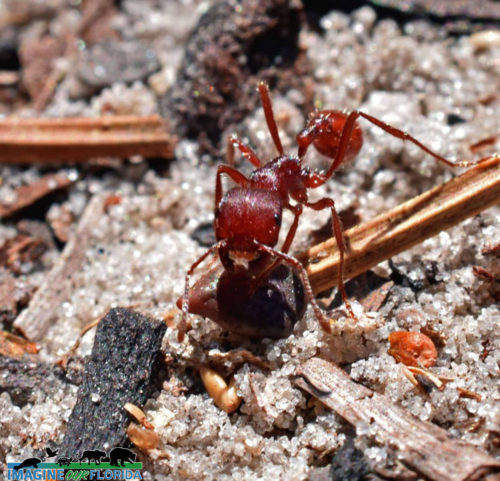
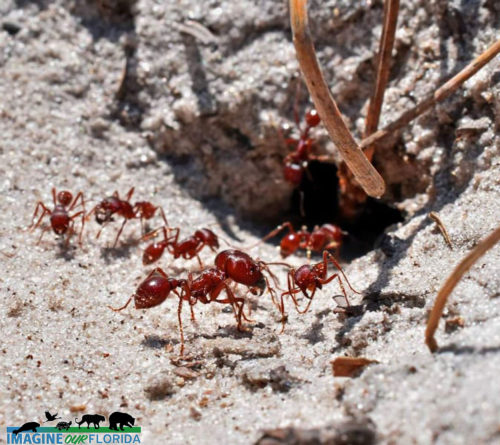
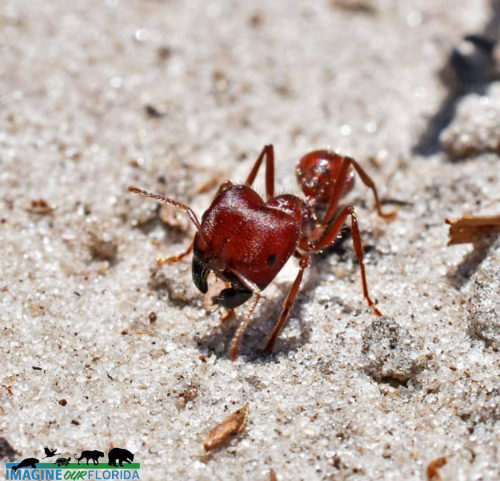
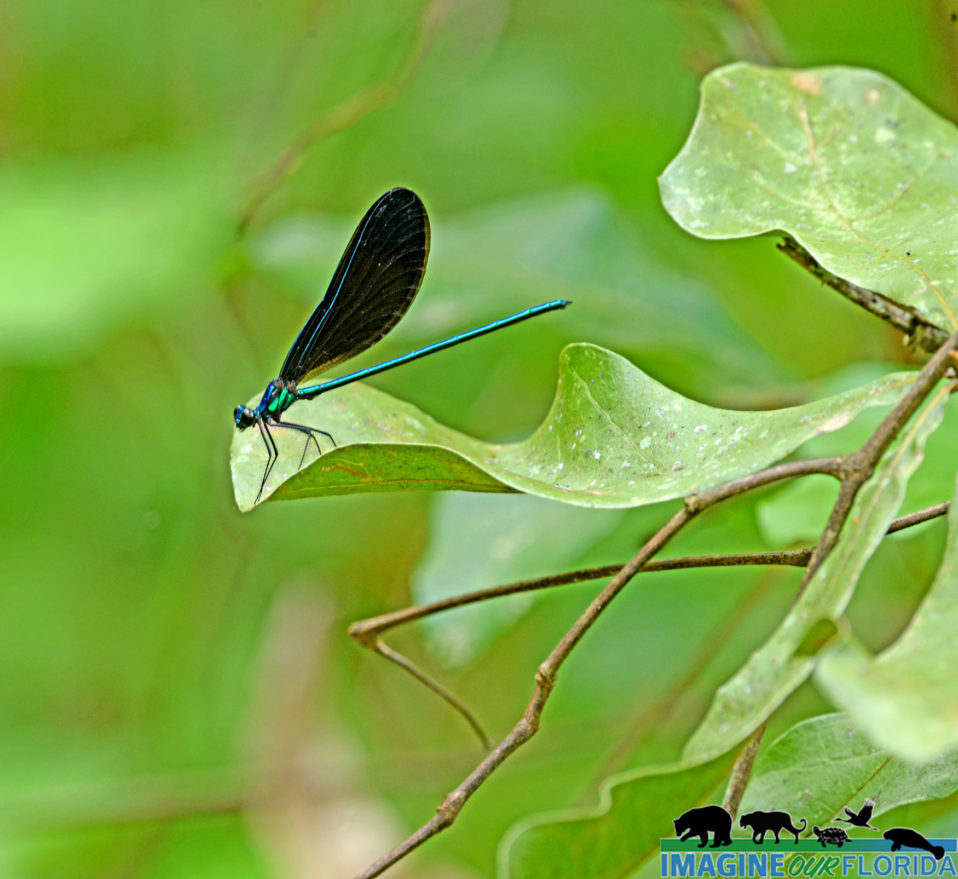
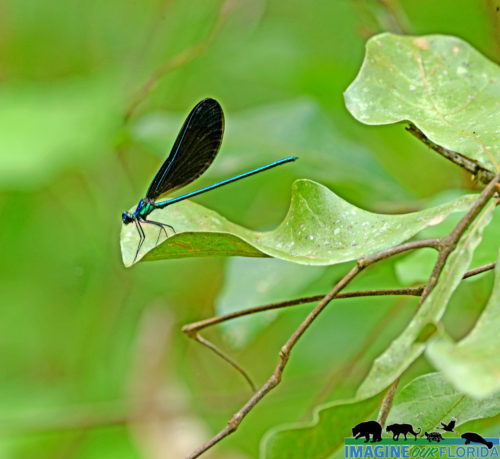
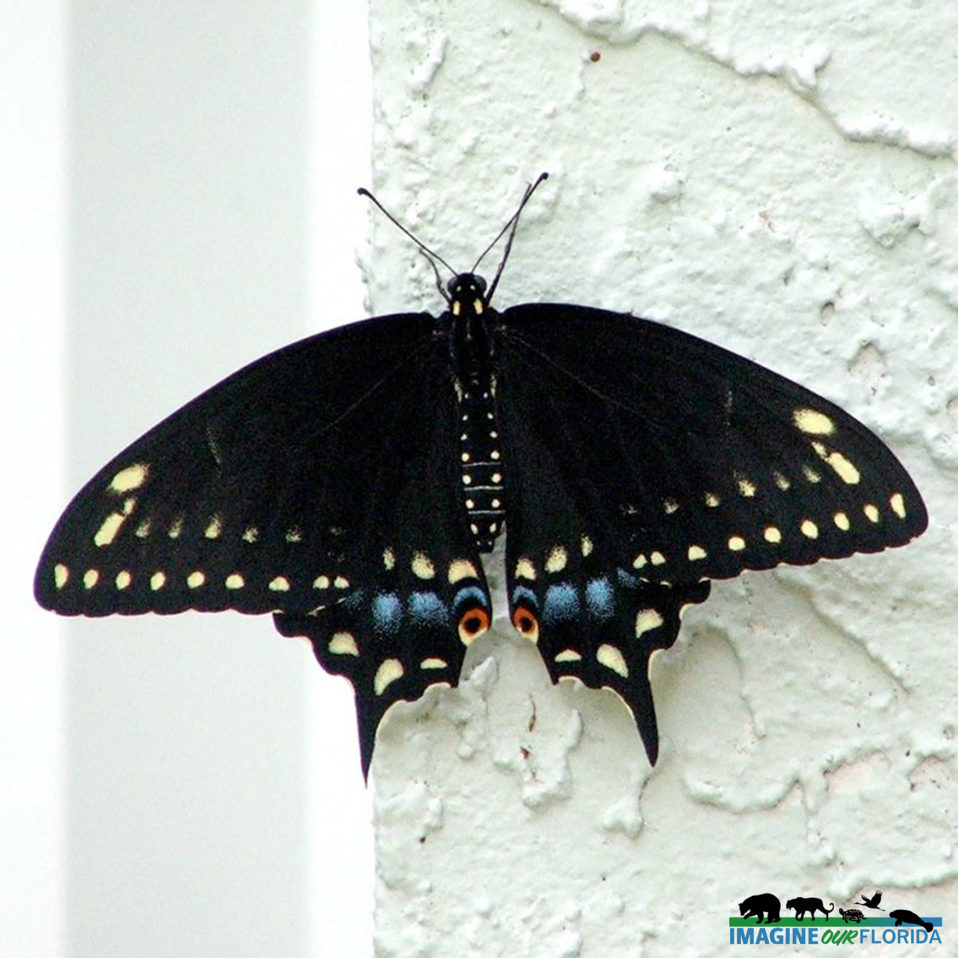
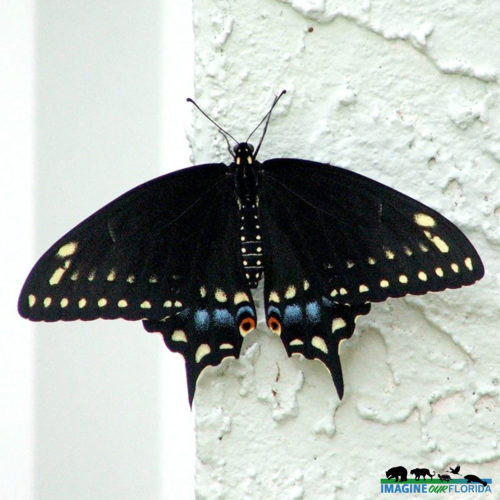
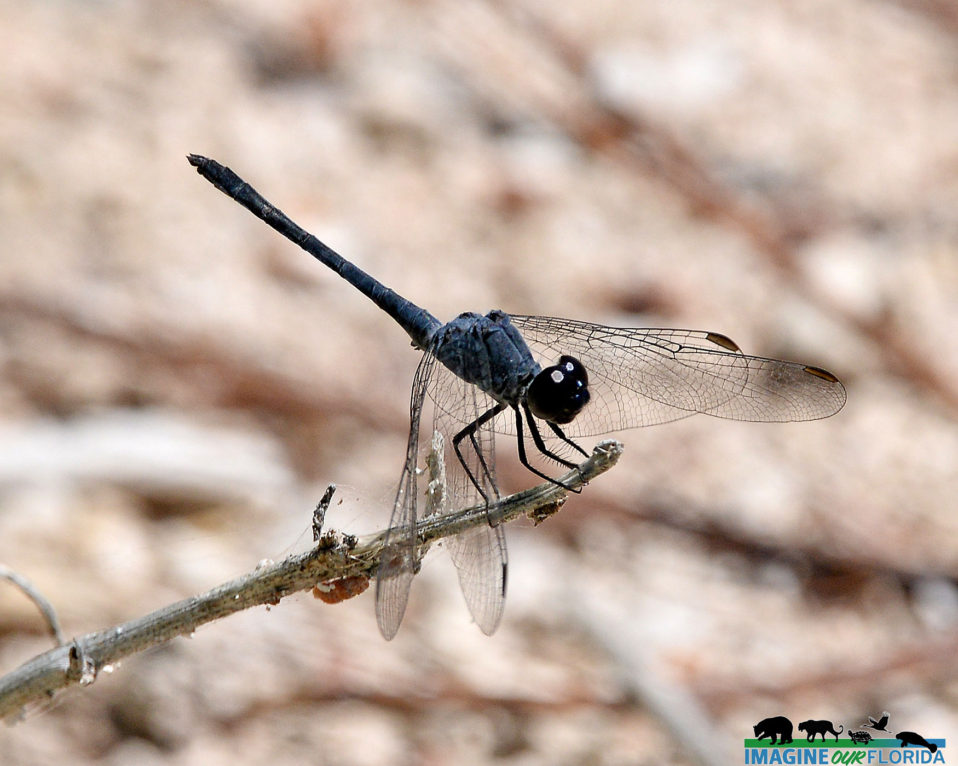
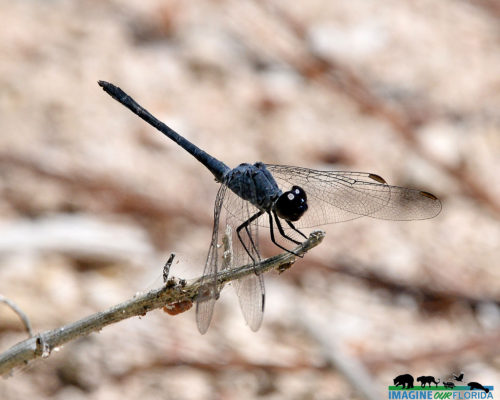
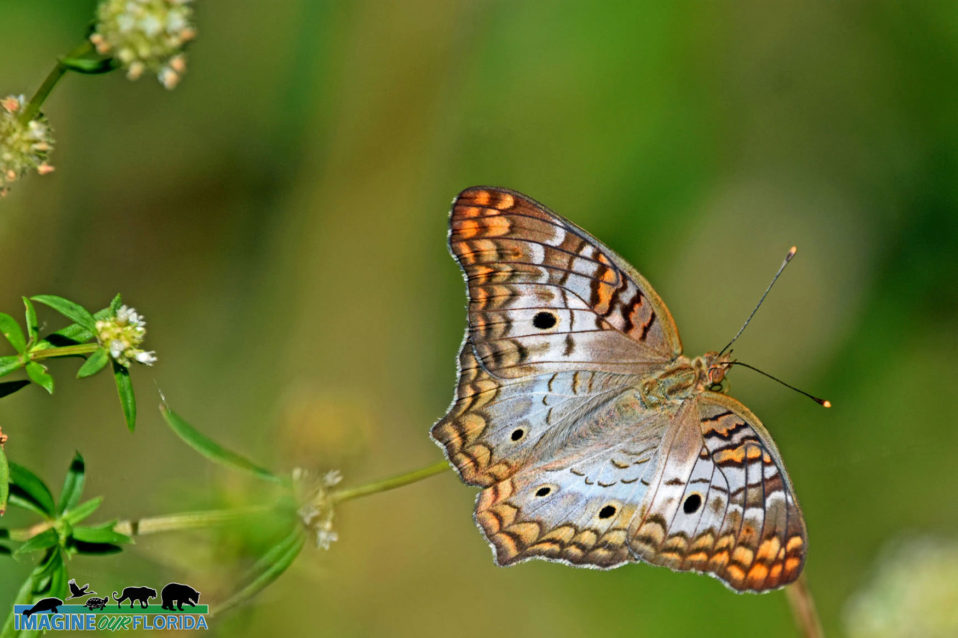
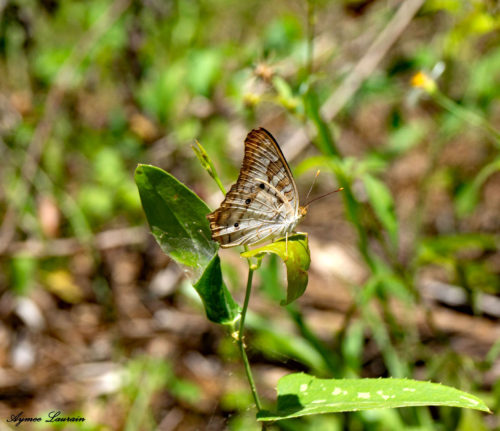
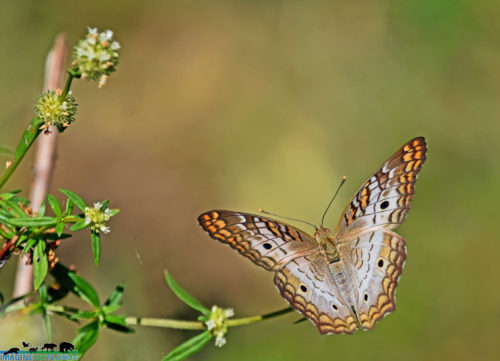
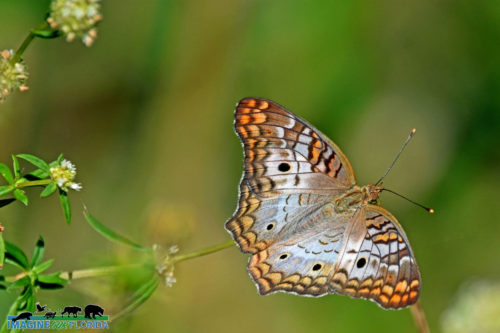
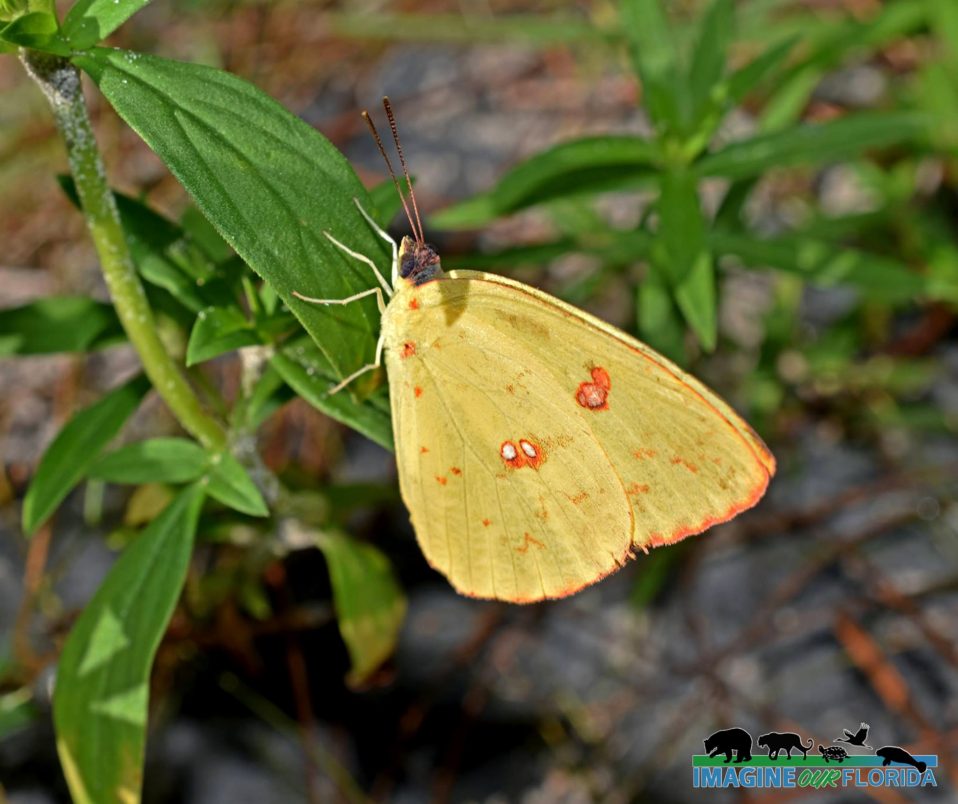
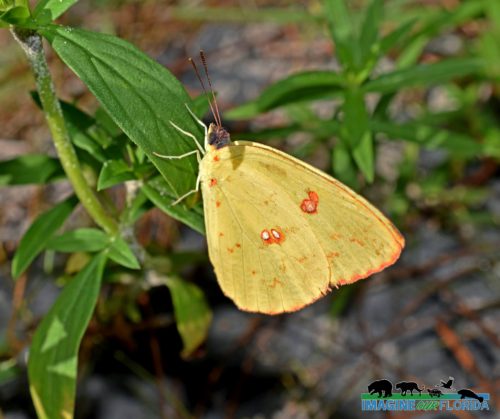
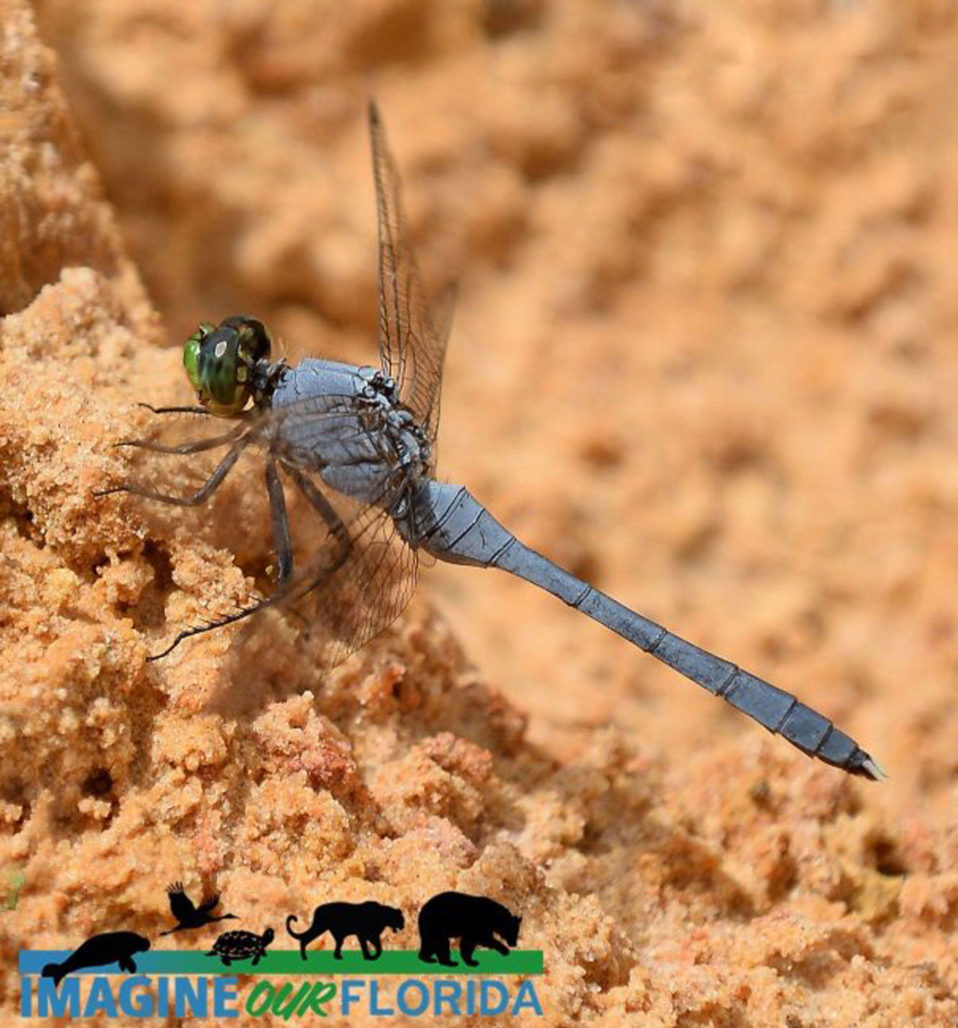
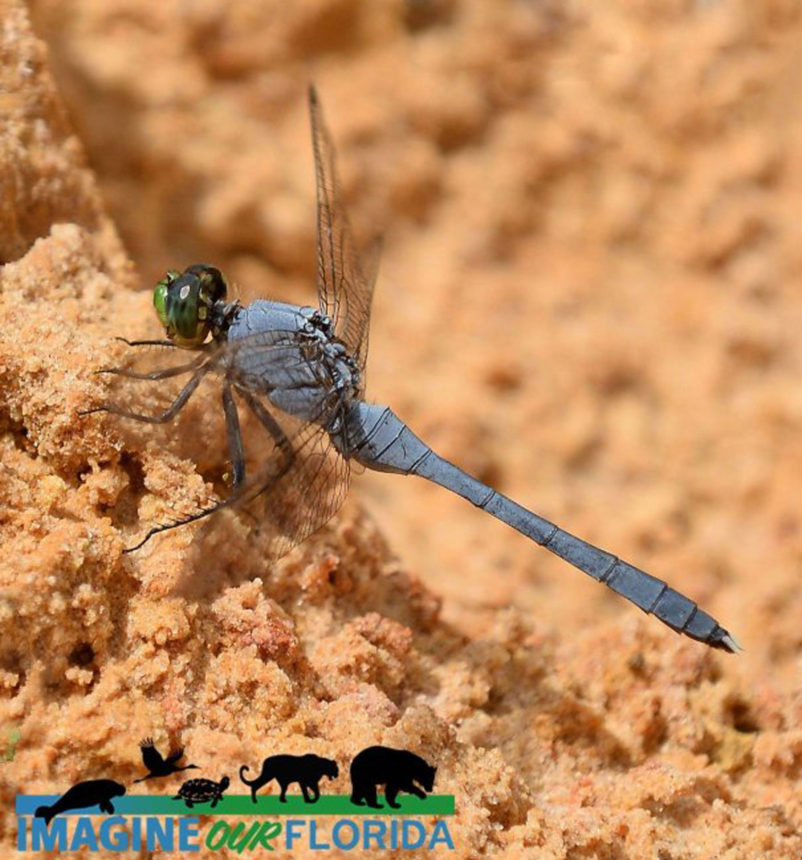
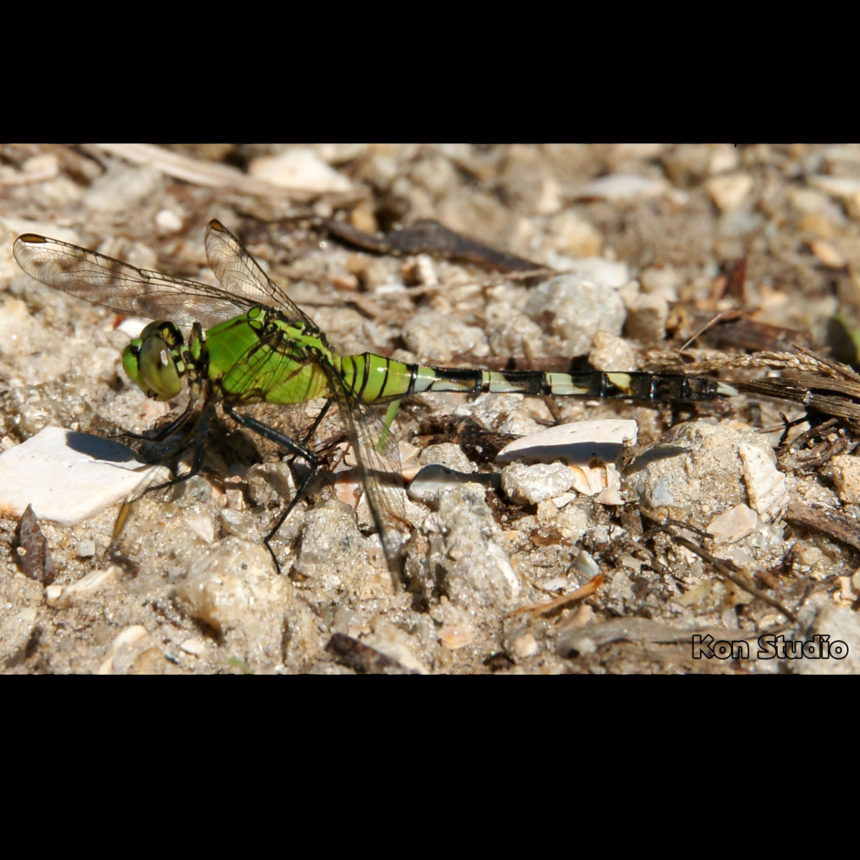
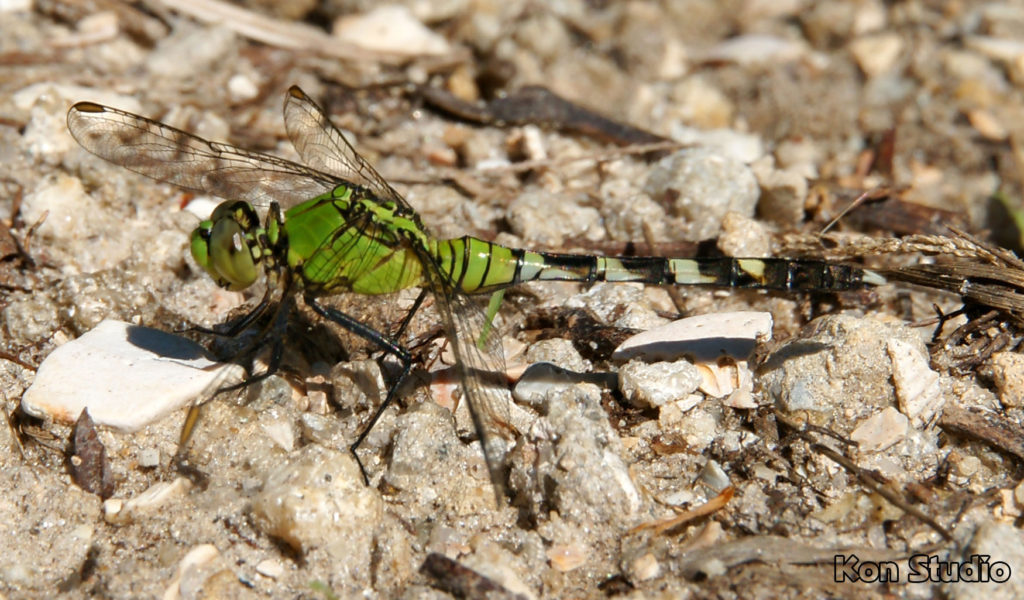
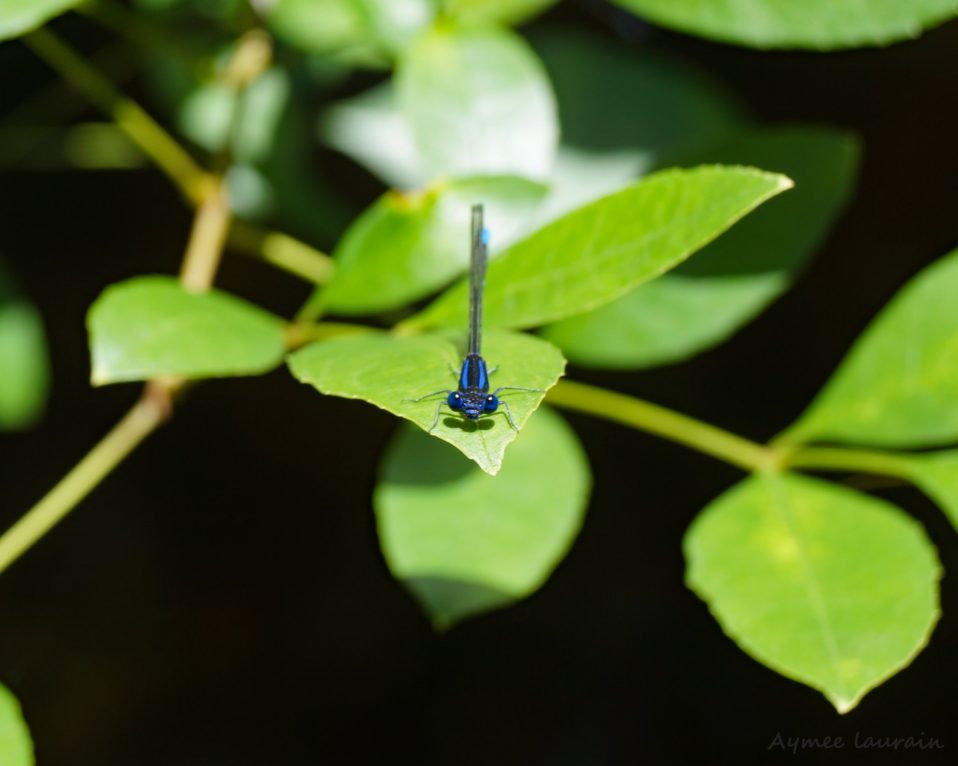
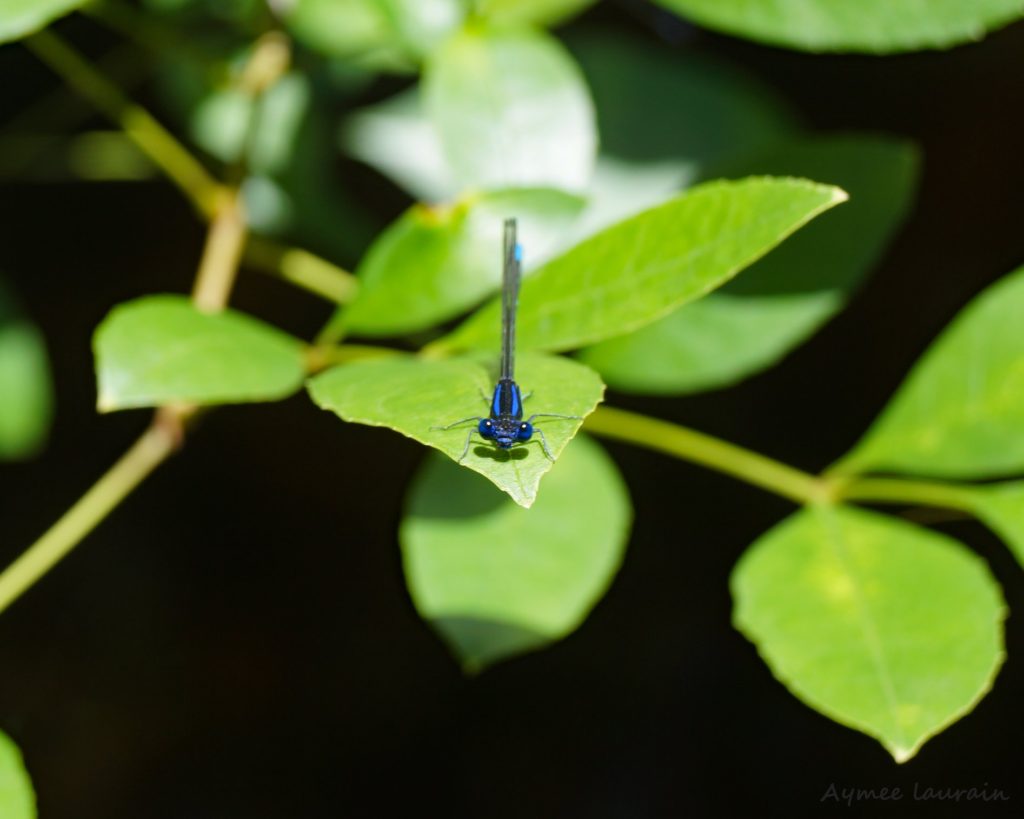
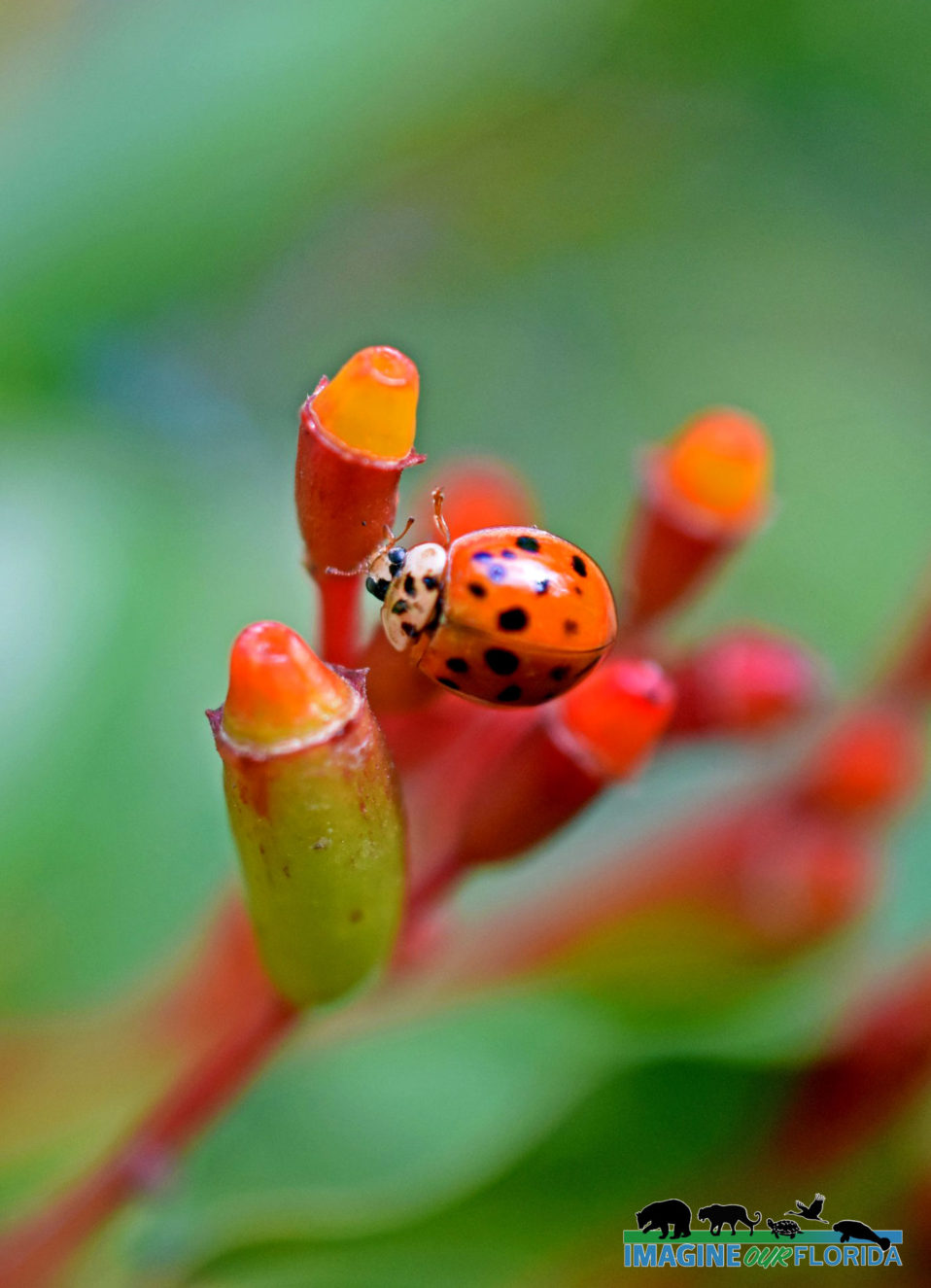
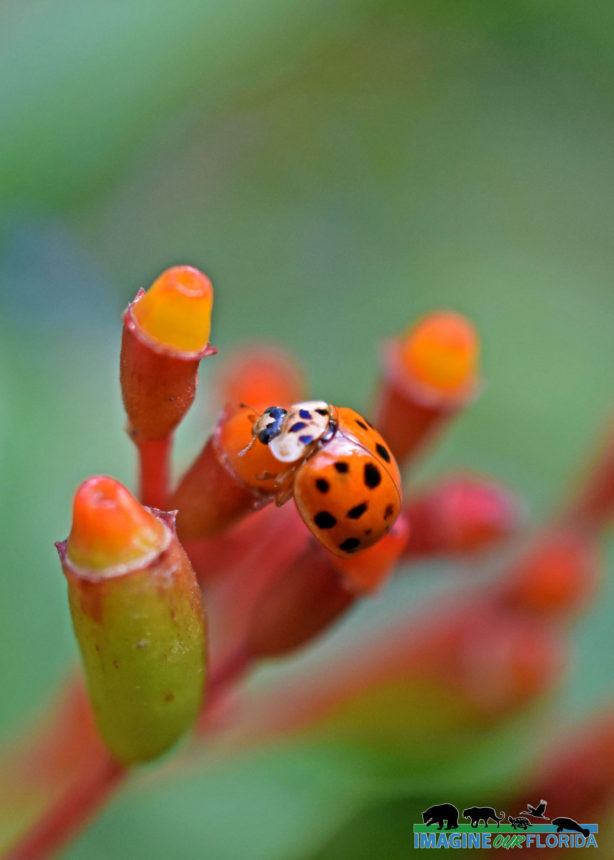
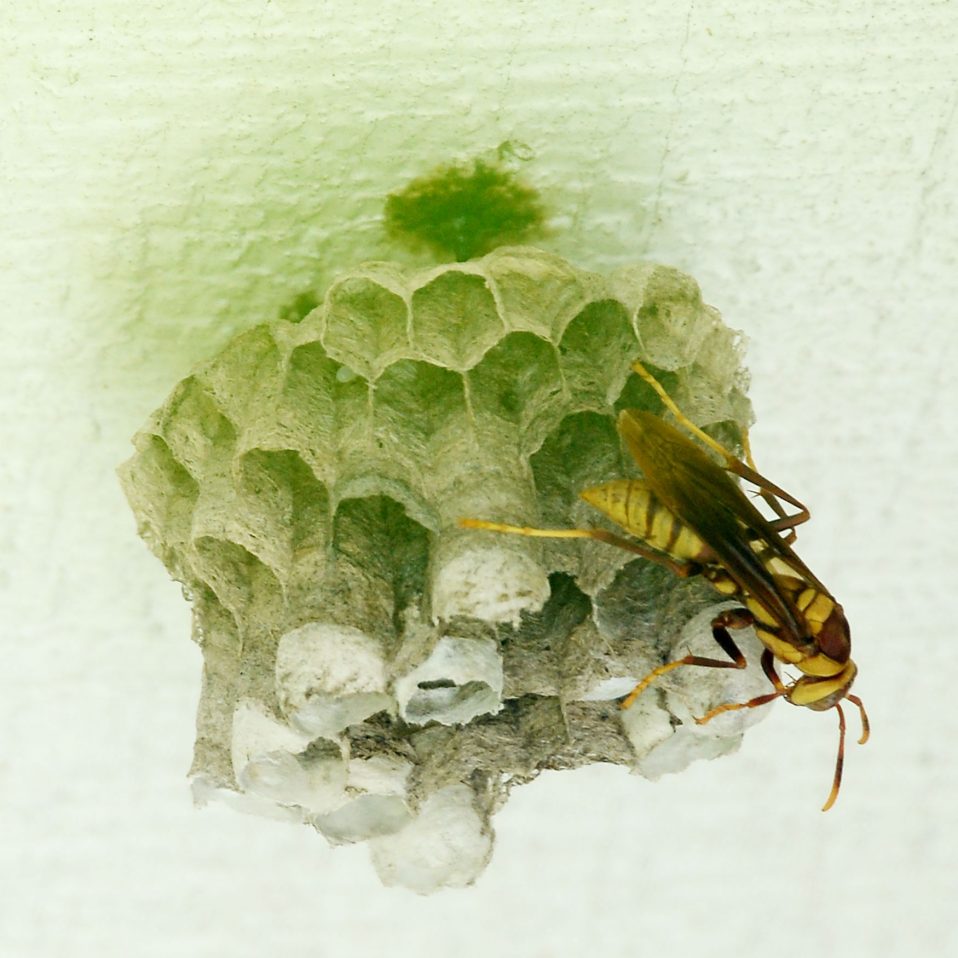
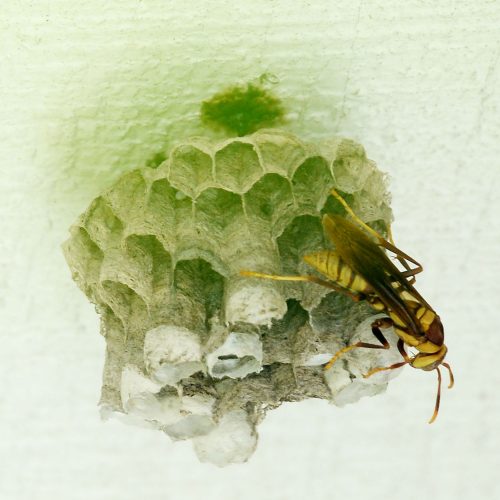
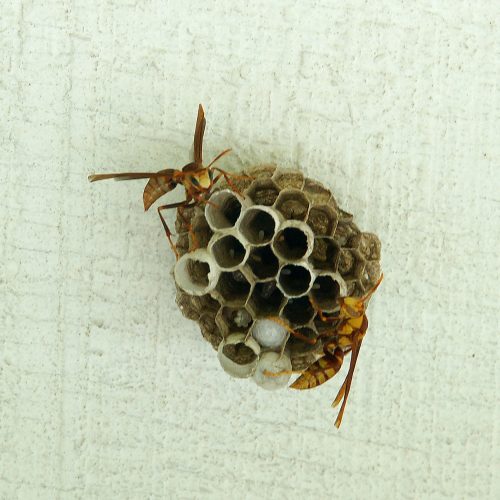
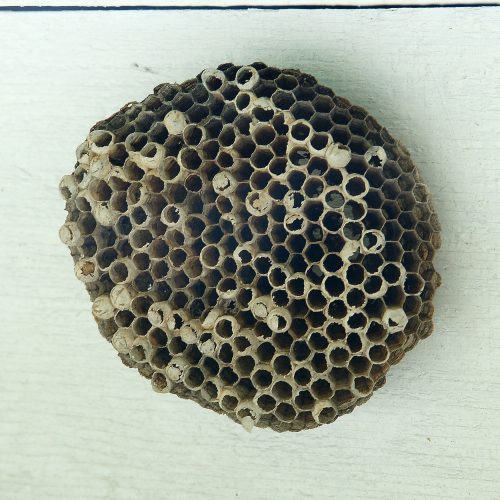
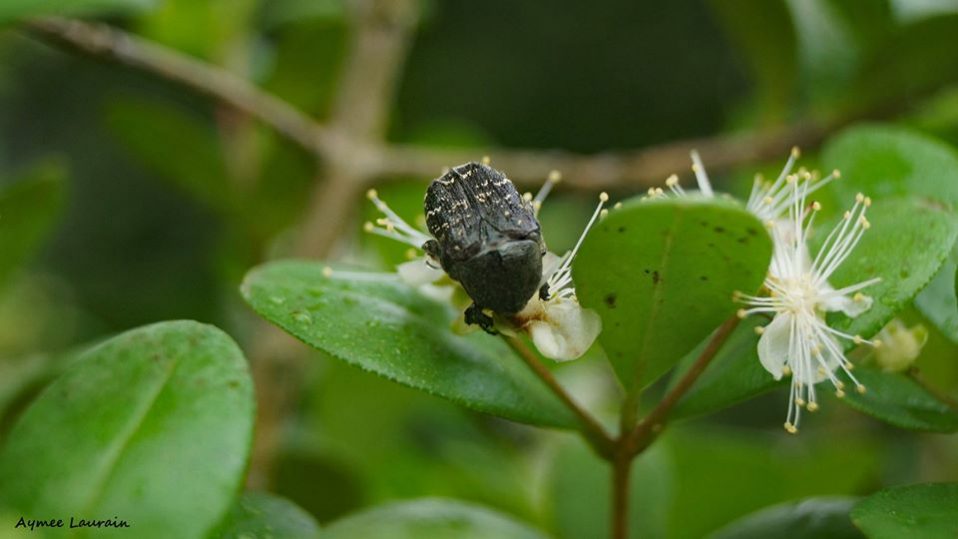

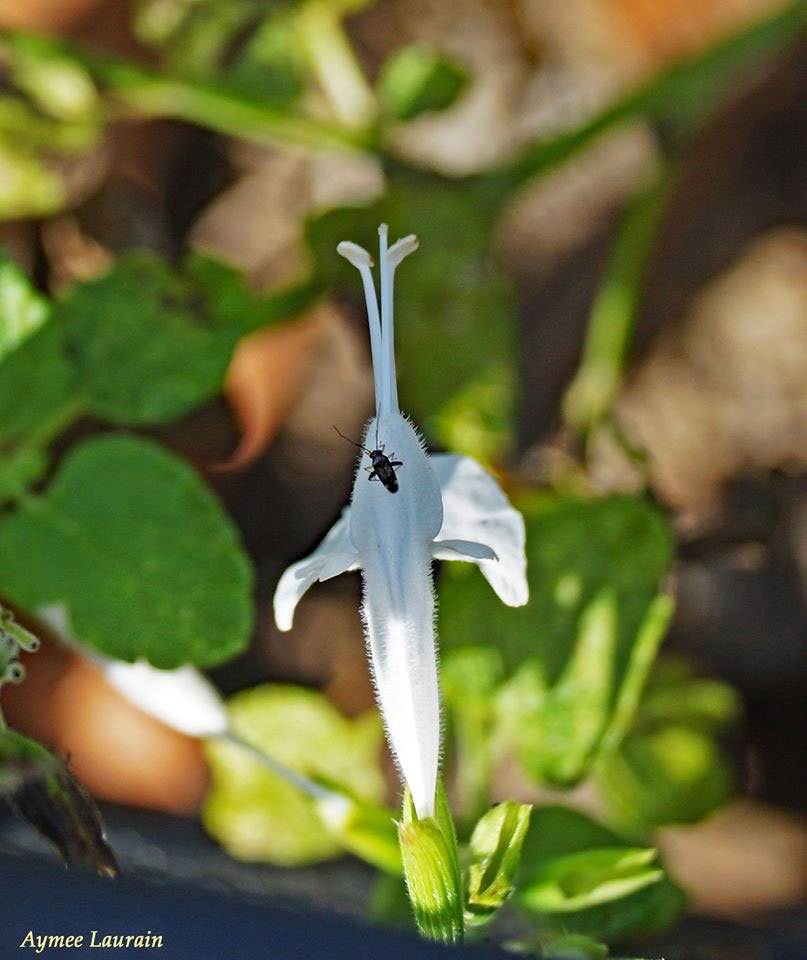
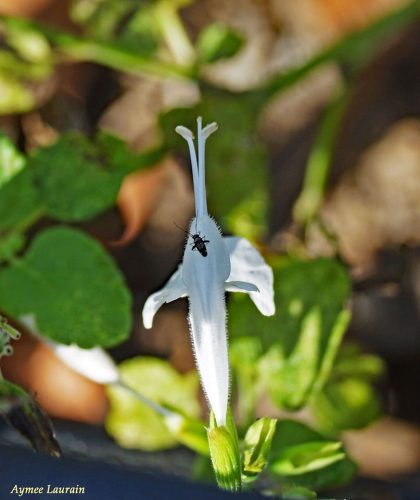
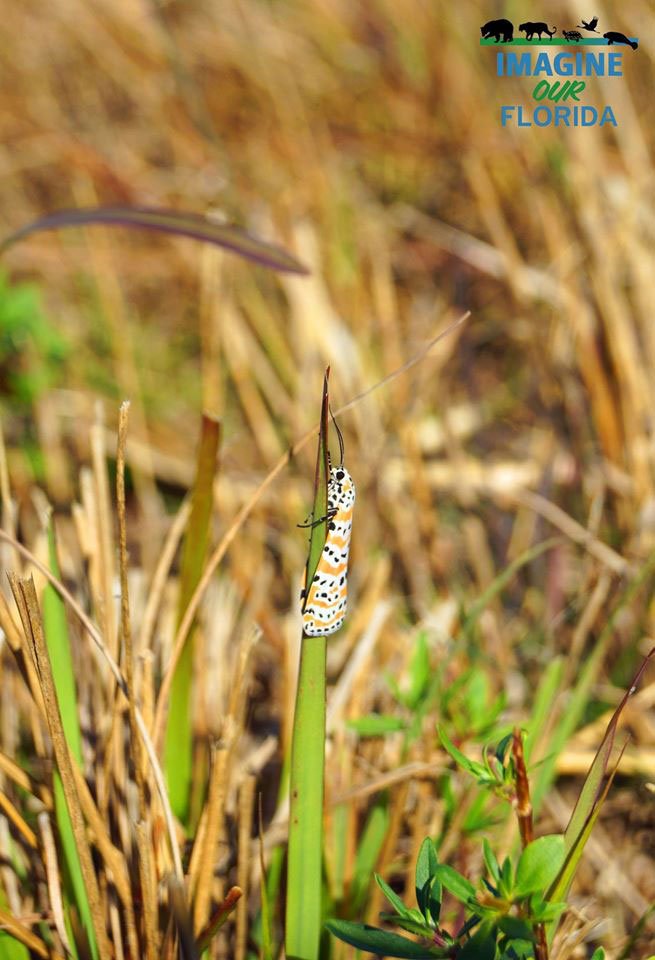
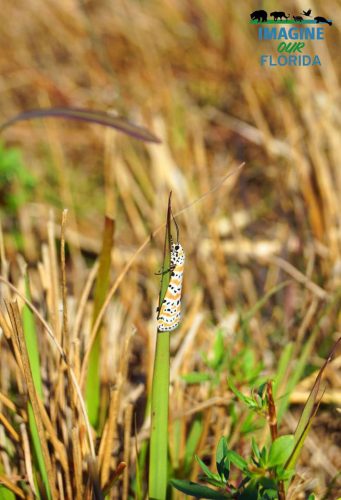
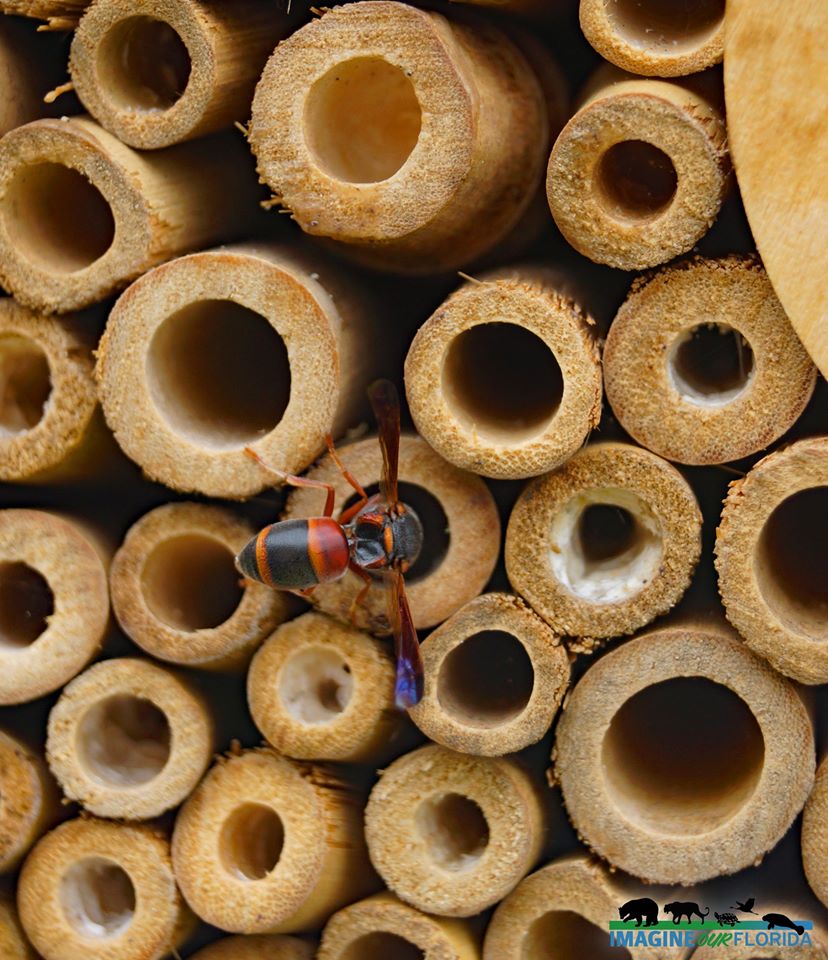
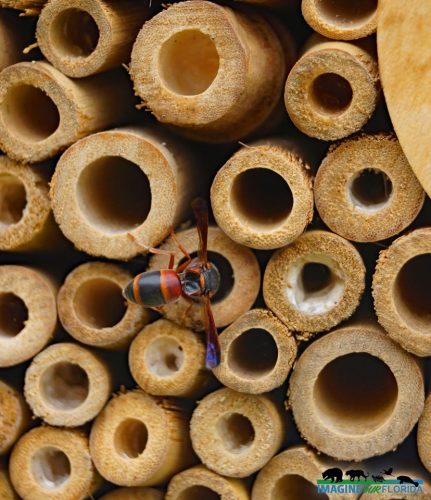
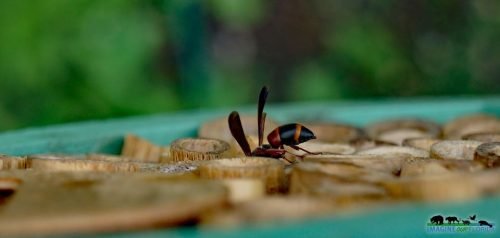
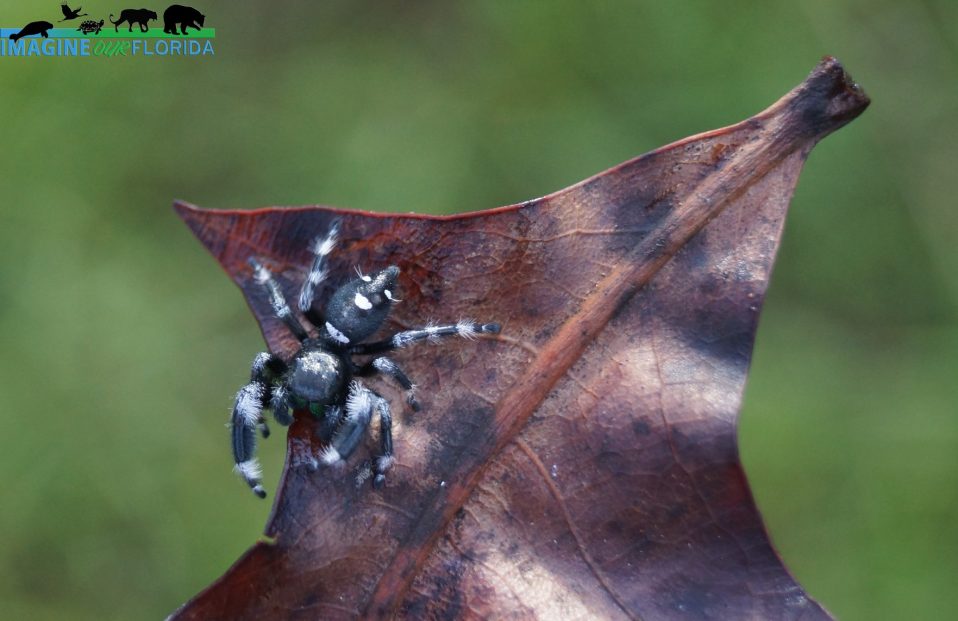
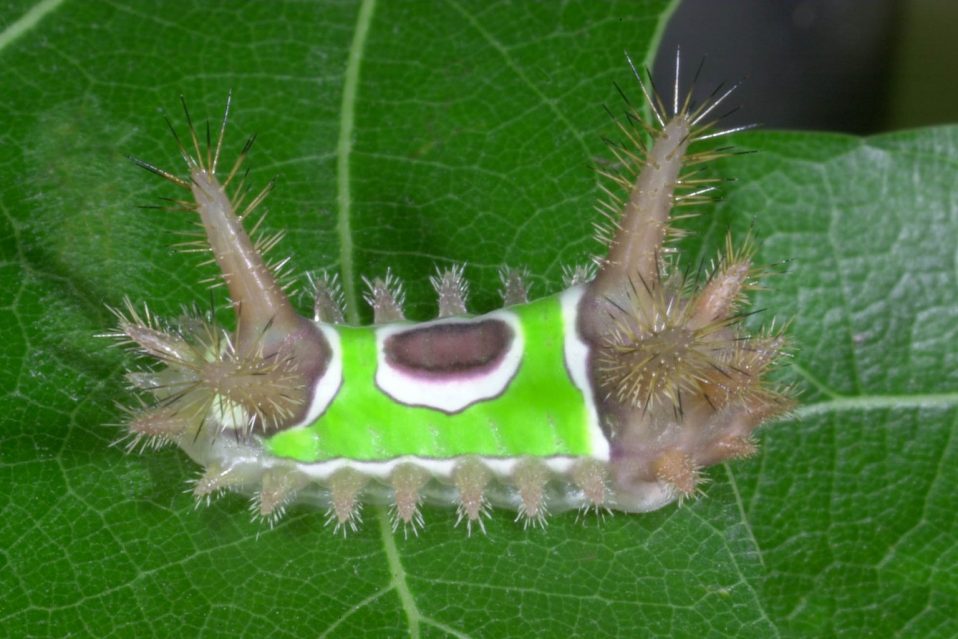

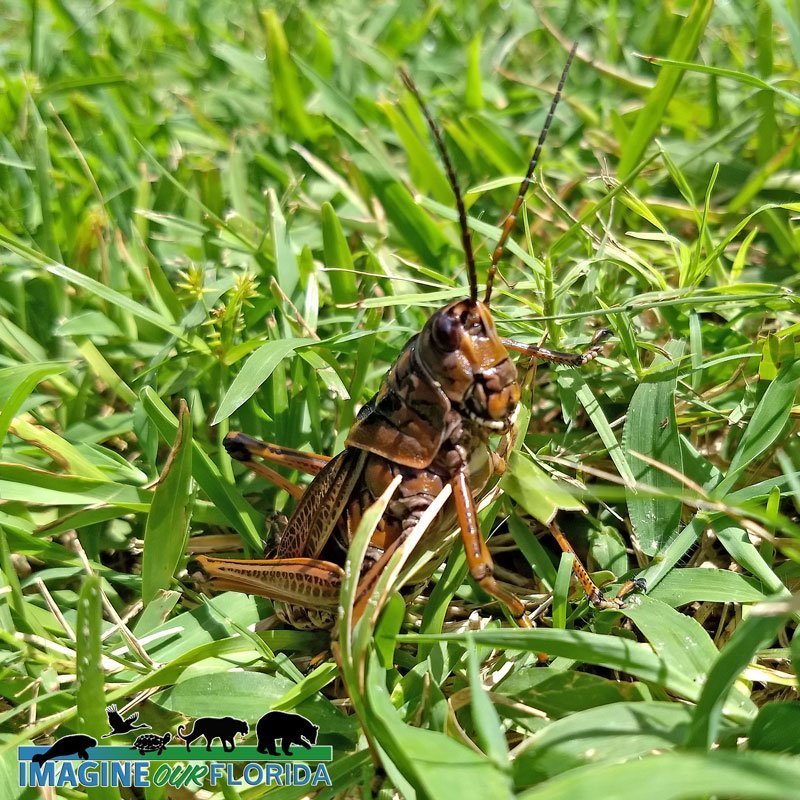
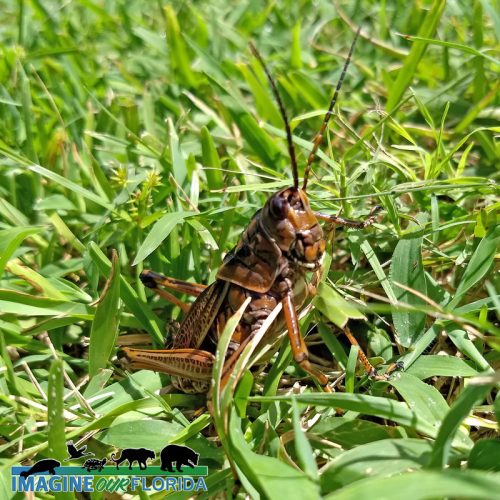
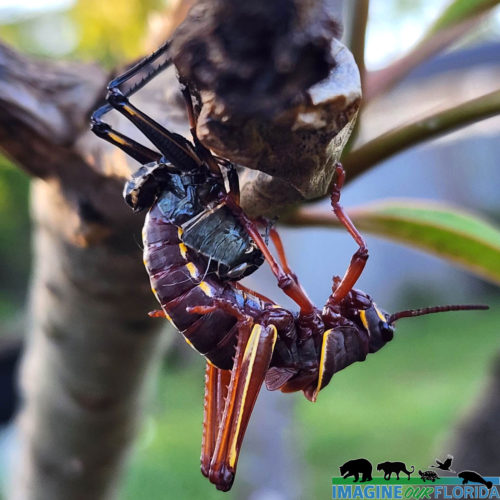
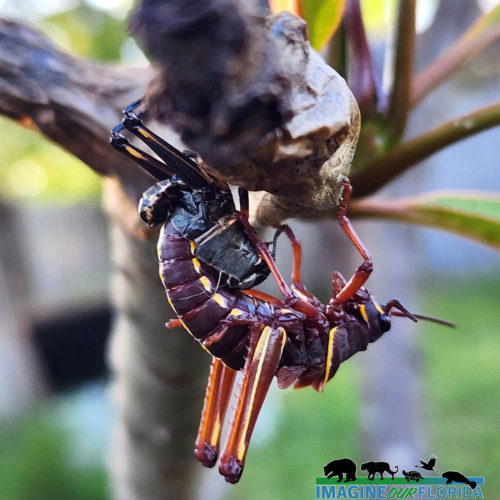
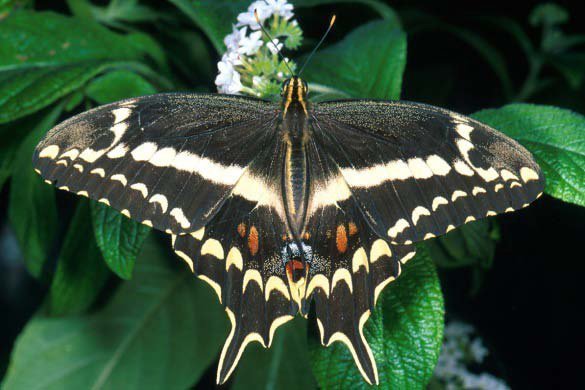
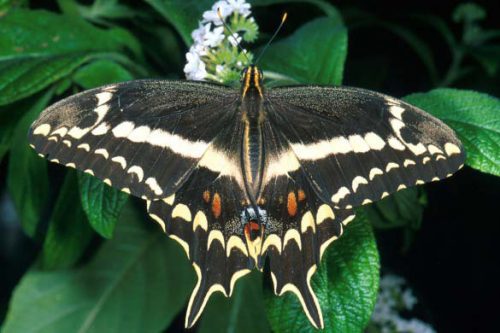
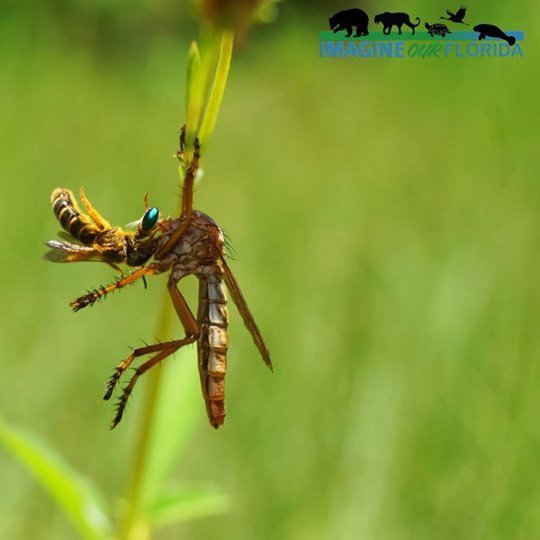
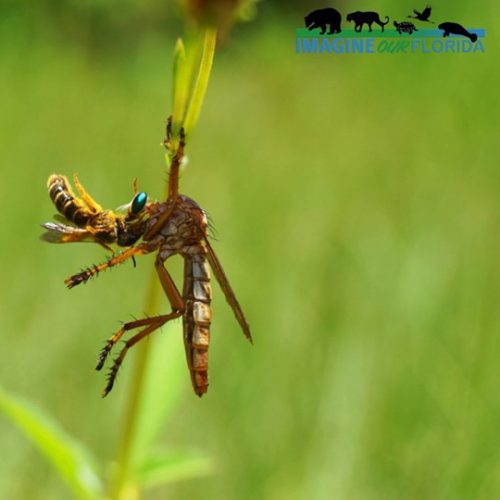
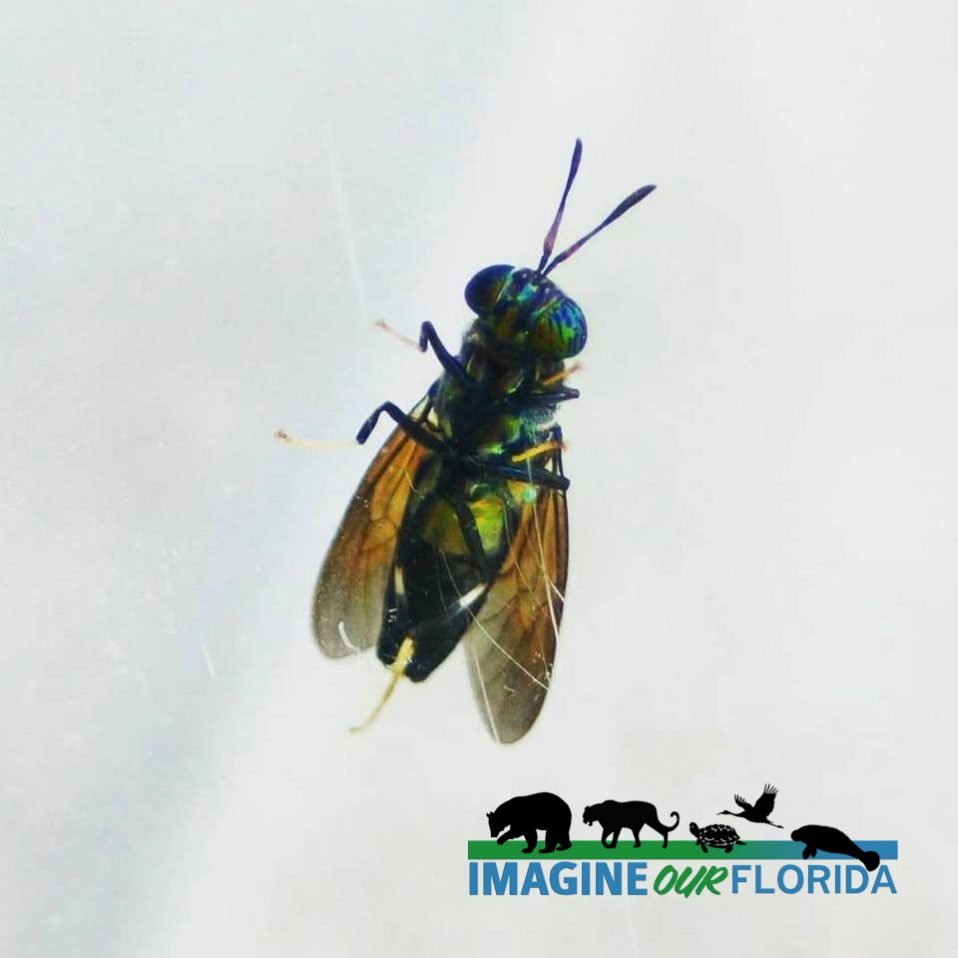
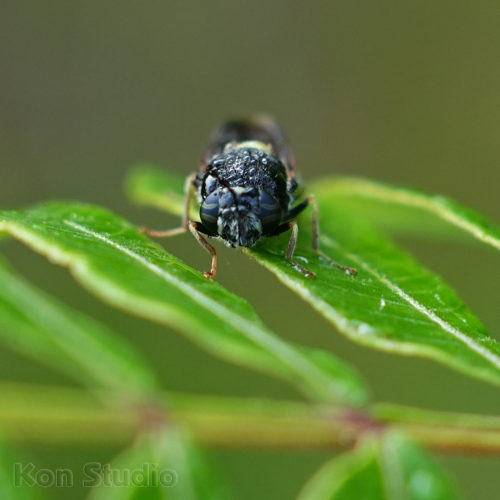
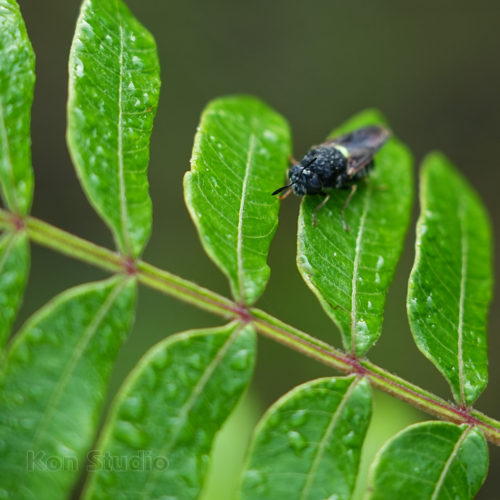
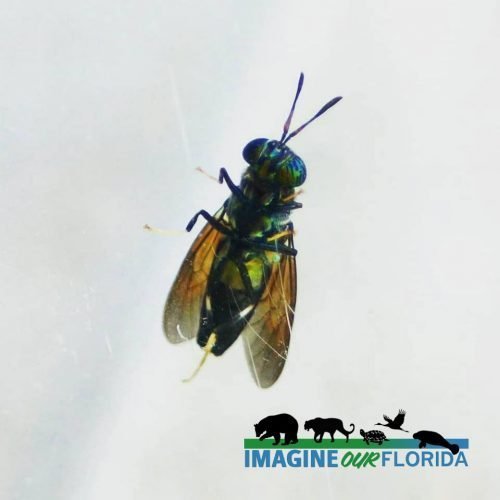
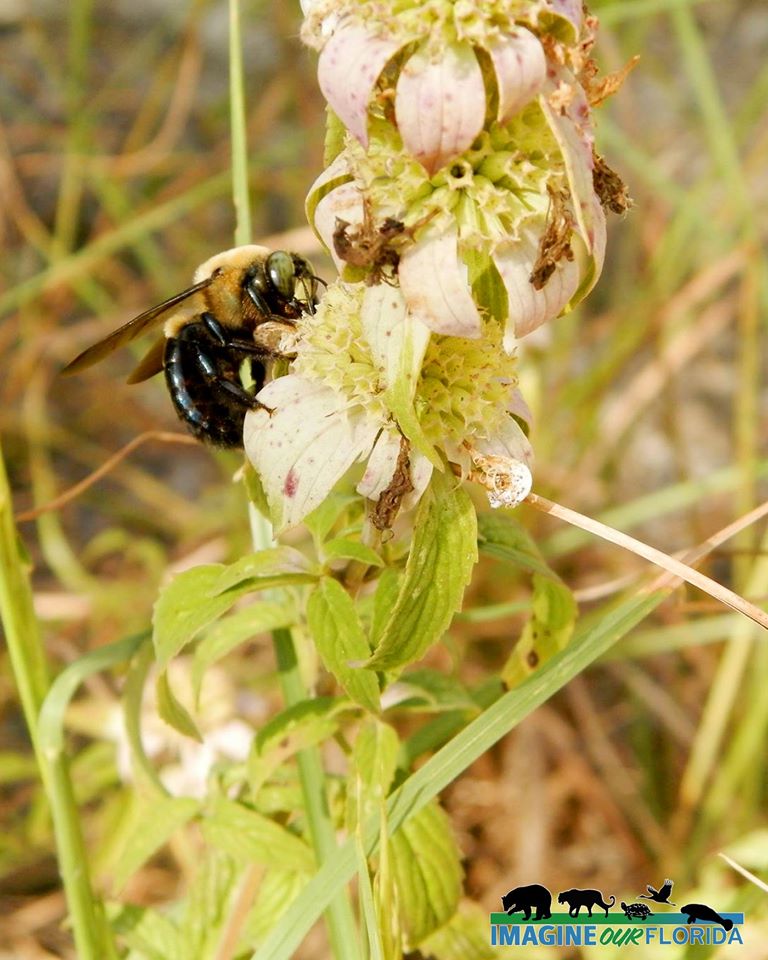
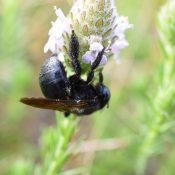
Recent Comments